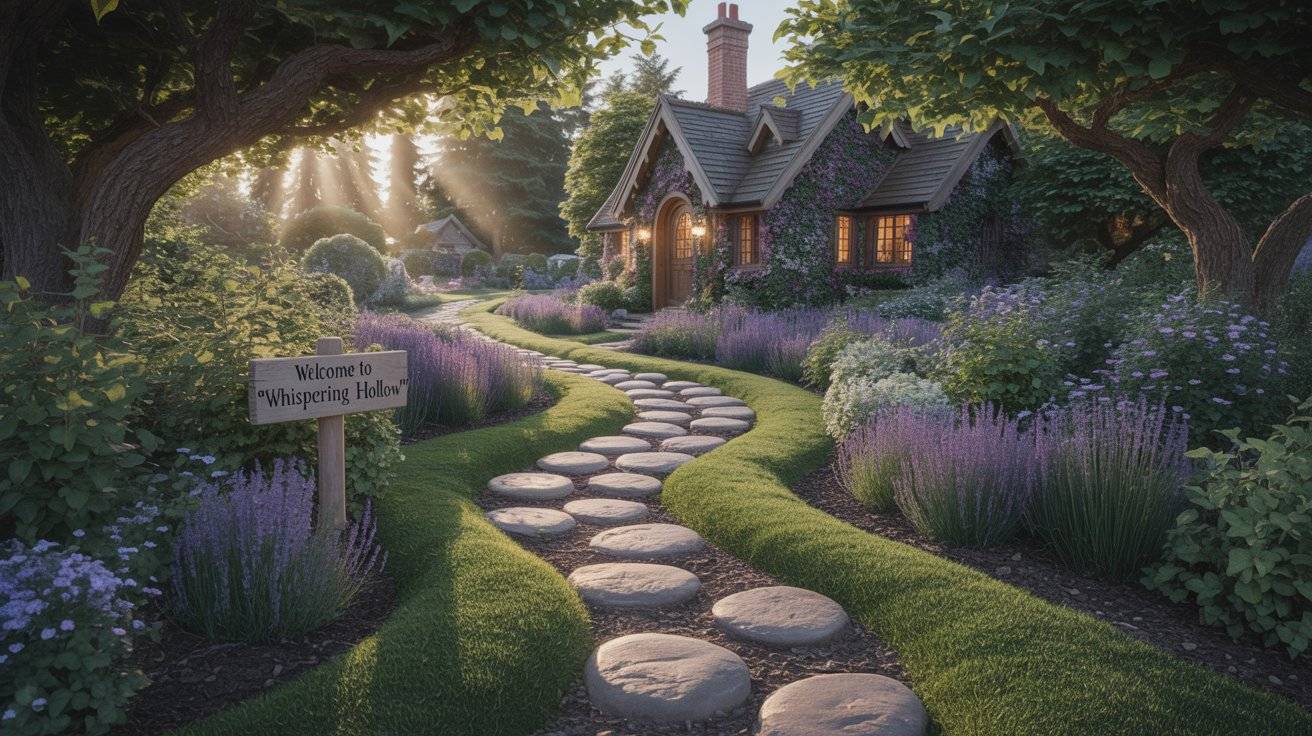Create a garden it’s about setting the mood. A truly magical garden path turns a stroll into an experience. It can lead to a quiet bench, a secret hideaway, or a cozy pergola covered in vines. From natural stone to glowing lights, what you choose to lay underfoot and line the sides with can transform your entire outdoor space into a scene from a fairytale.
This guide shares 50 carefully chosen ways to design a magical garden path that feels dreamy, peaceful, and personal. Each idea is unique, easy to understand, and meant to spark your creativity. Let’s start shaping your garden into a retreat that brings joy with every step.
1. Flagstone Path with Moss In-Between
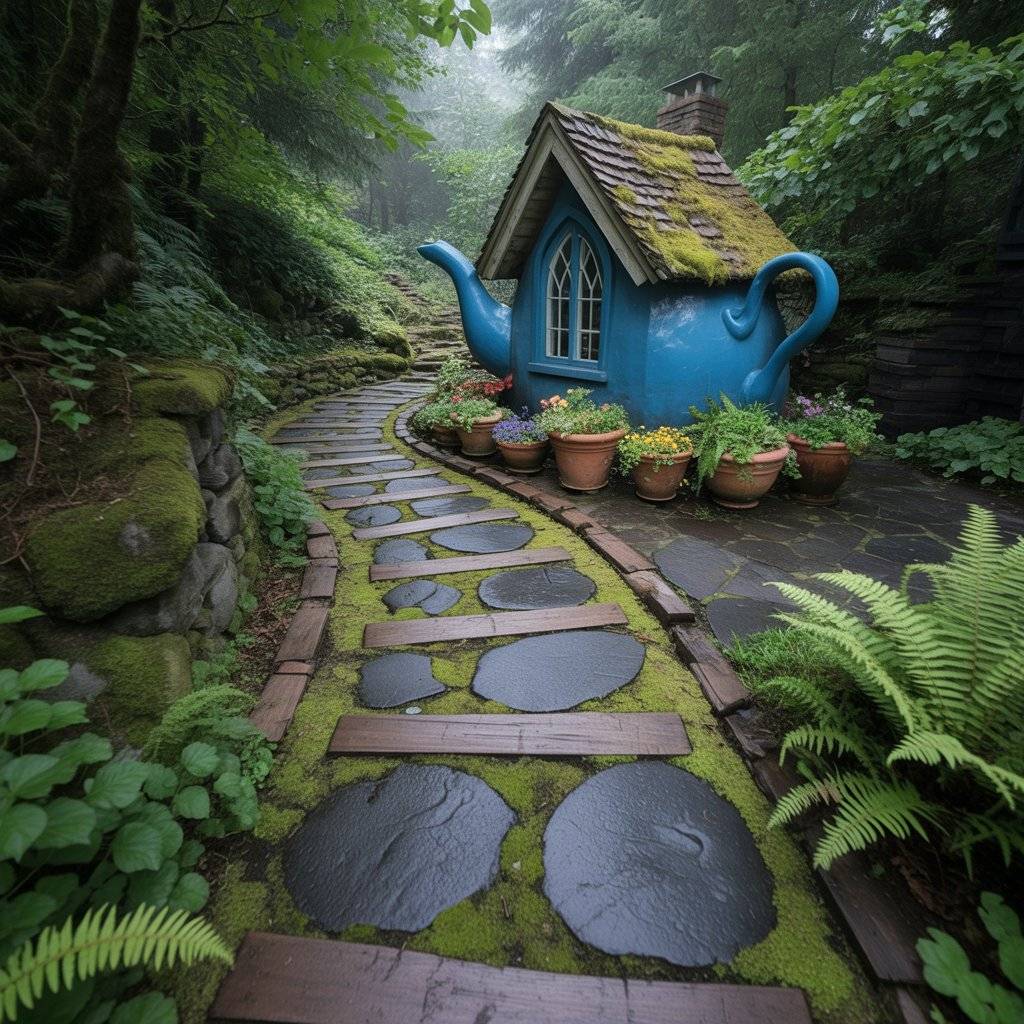
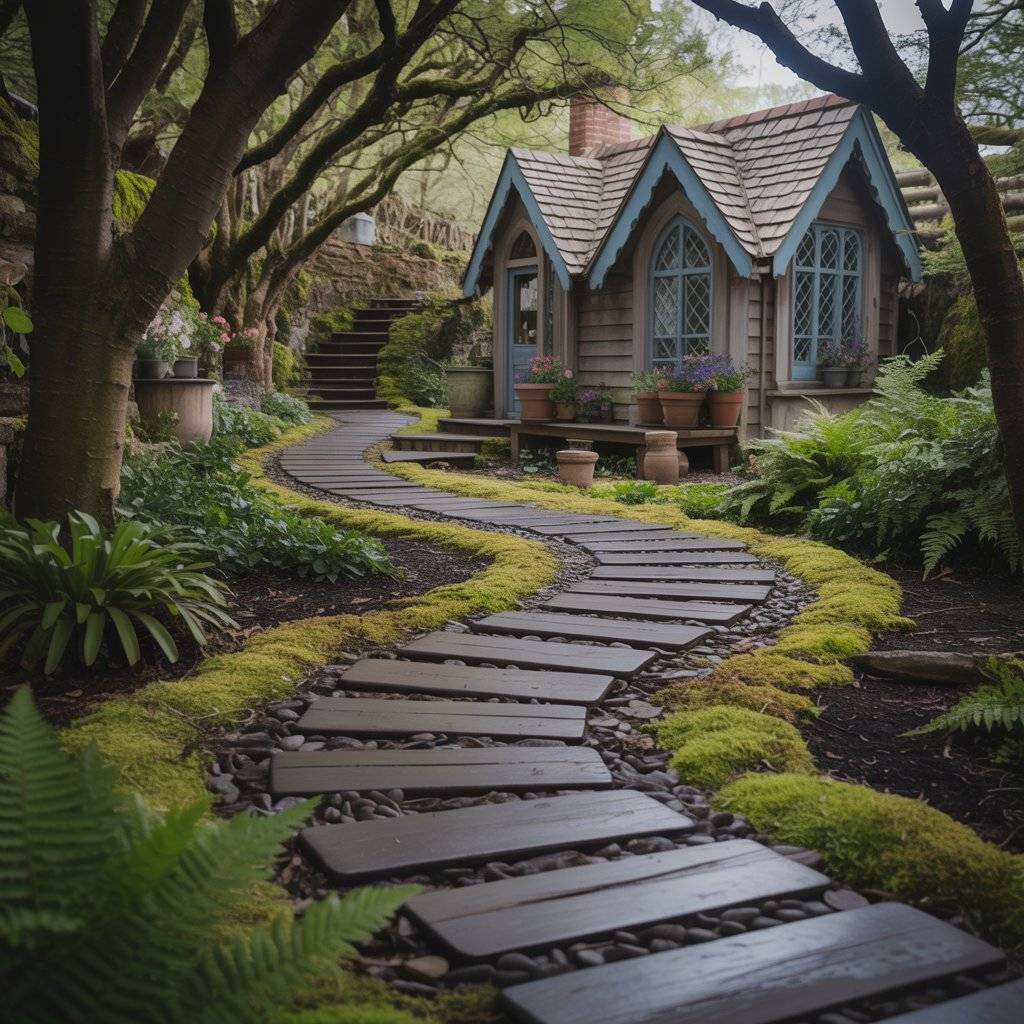
A flagstone path with moss growing between the stones gives off a timeless charm. The irregular shapes of flagstone create a natural, whimsical feel. Moss adds softness and a pop of green that feels like it’s straight from an enchanted forest.
You can encourage moss growth by placing the stones slightly apart and watering the path regularly in shady areas. This look works best when the path winds gently through trees or flowerbeds.
The more organic the layout, the more fairytale-like it becomes. Add a few ferns or woodland flowers along the edges, and you’ve created a lush, grounded walkway that invites quiet moments and barefoot walks.
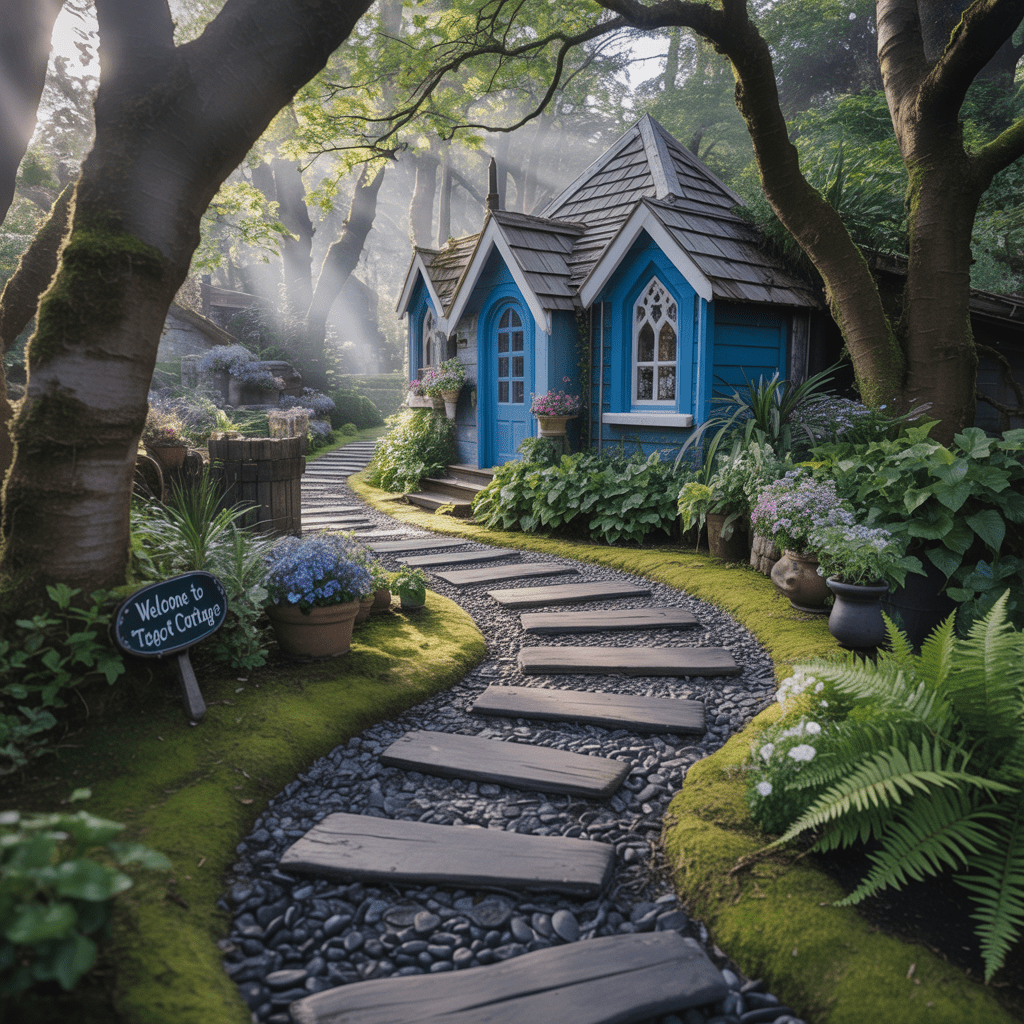
2. Crushed Granite Trail with Wildflowers
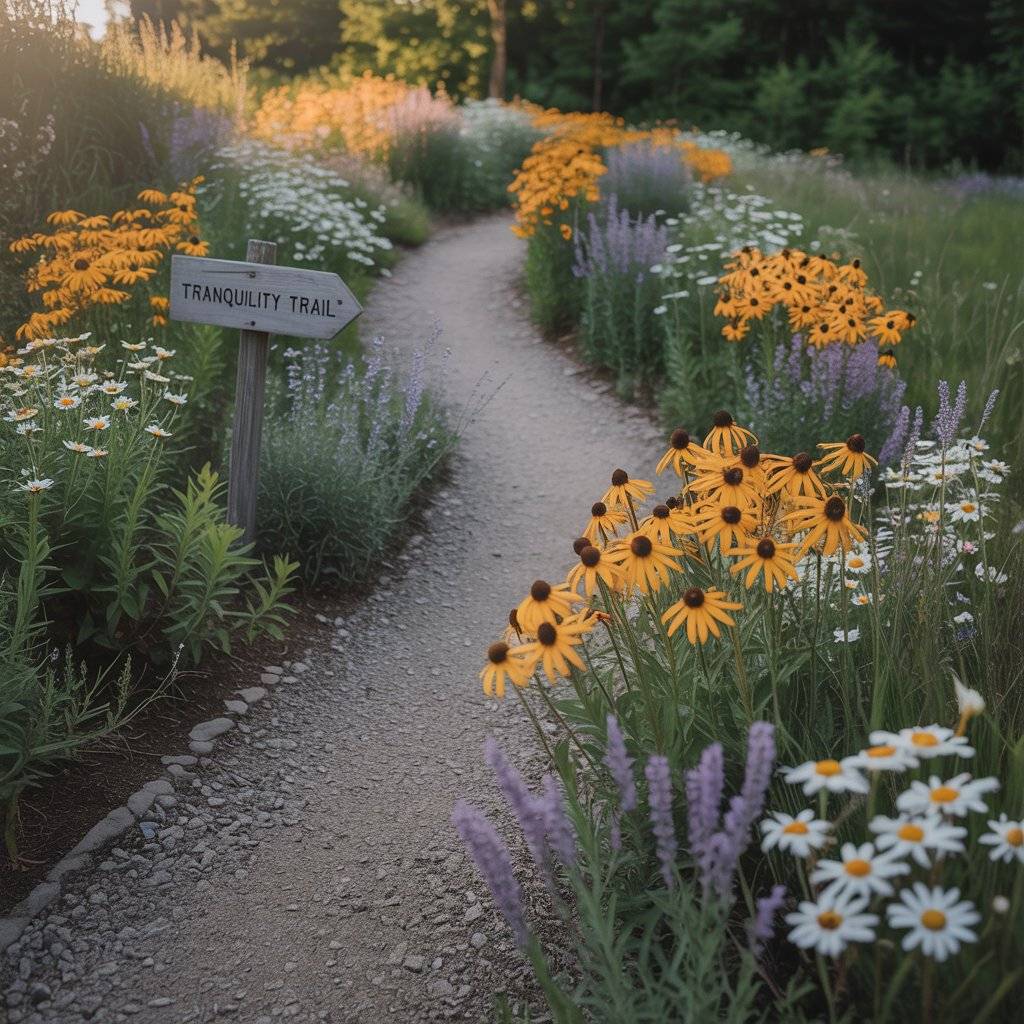
Crushed granite offers a solid yet permeable surface for walking. It’s a popular option because it’s affordable, easy to maintain, and looks great with natural landscaping. To make it magical, let wildflowers bloom along the edges.
Think daisies, black-eyed Susans, or lavender. This style feels casual but charming. As you walk, the gentle crunch underfoot adds to the sensory experience. A curved layout enhances the effect, drawing the eye forward and giving a sense of adventure. Lighting is optional here, but a few solar lights can enhance the nighttime glow.

3. Pebble Mosaic Centerpiece Path
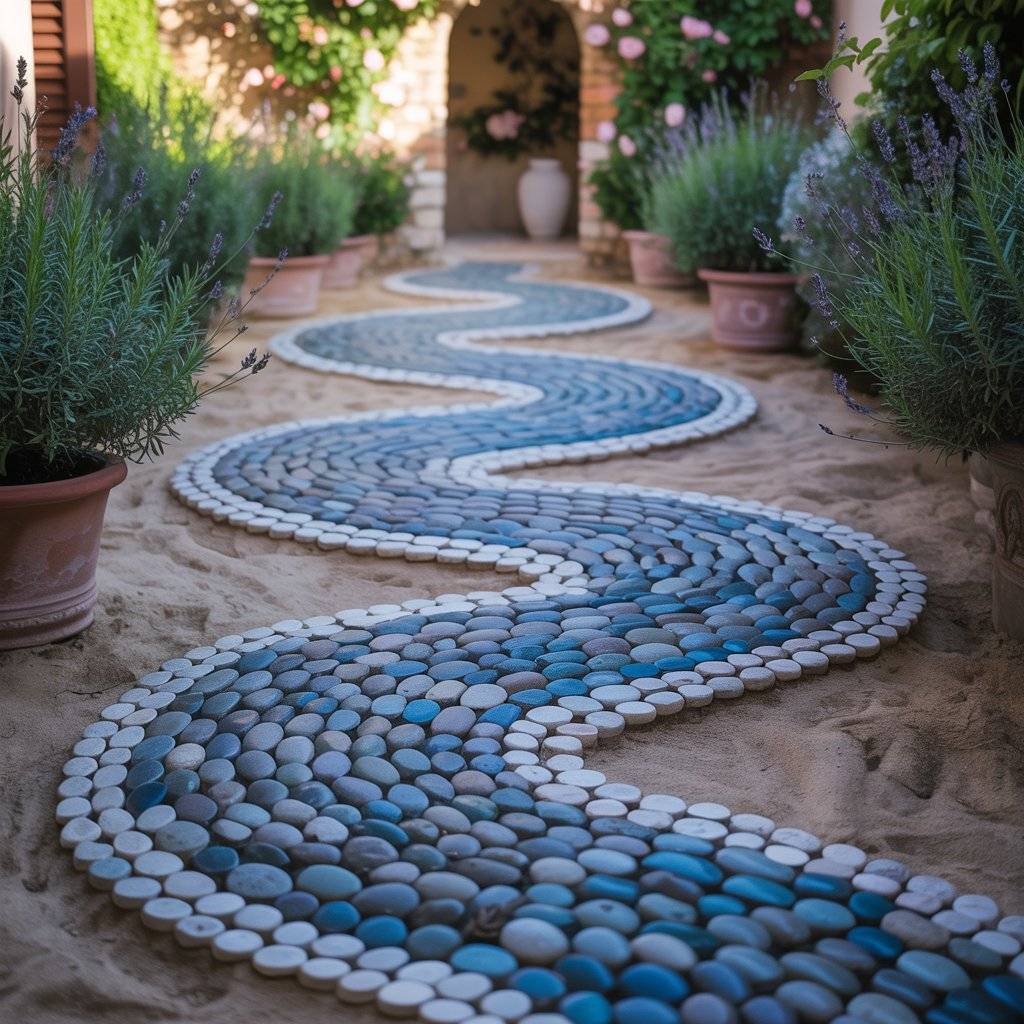
Instead of just laying a trail, make it a work of art. A pebble mosaic path uses small pebbles set into concrete or sand to create patterns, shapes, or even pictures. It can be as simple as a spiral or as intricate as a flower design.
This idea takes more planning but makes a strong visual impact. It pairs well with Mediterranean or whimsical gardens. Keep the rest of the path elements simple low plants, tidy borders so the design shines. It’s a chance to turn your walkway into a story beneath your feet.
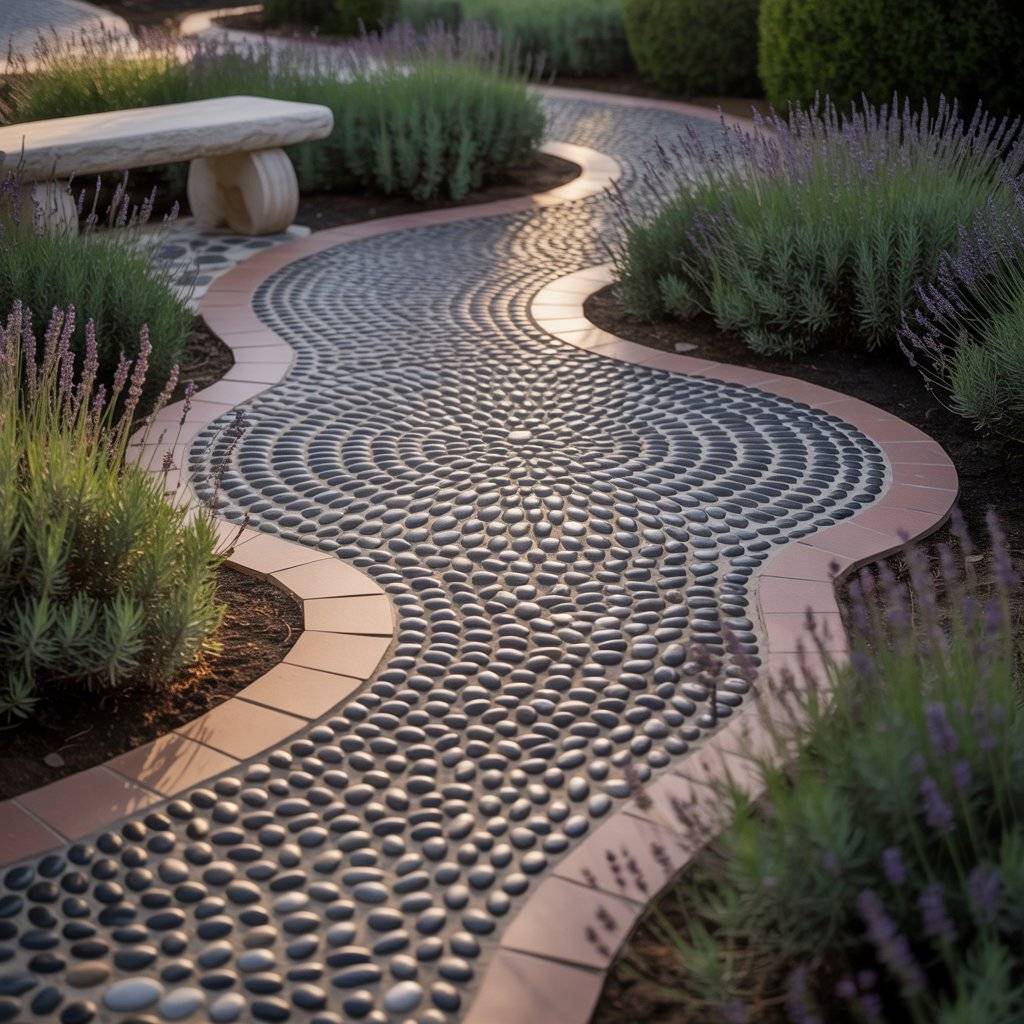

4. Brick Path with Ivy Border
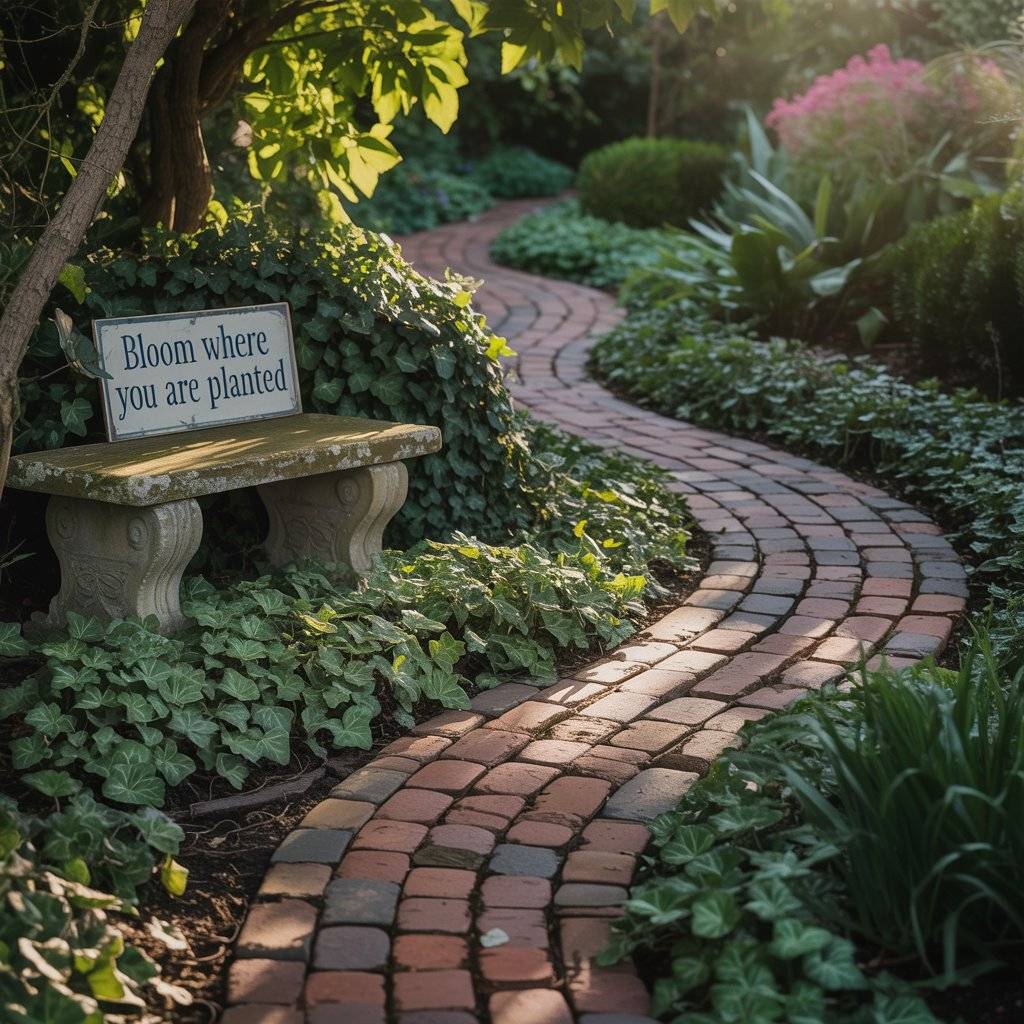
Brick gives structure and warmth to a garden path. Its reddish tone contrasts beautifully with green plants, and the rough texture adds old-world charm. Line your brick path with creeping ivy or other groundcovers like ajuga or thyme.
Over time, they will spill over the bricks and soften the edges. The path should meander if space allows. You can even tuck in small decorative items like vintage garden signs or fairy statues. This type of path works beautifully near a cottage-style garden or leading to a reading nook.
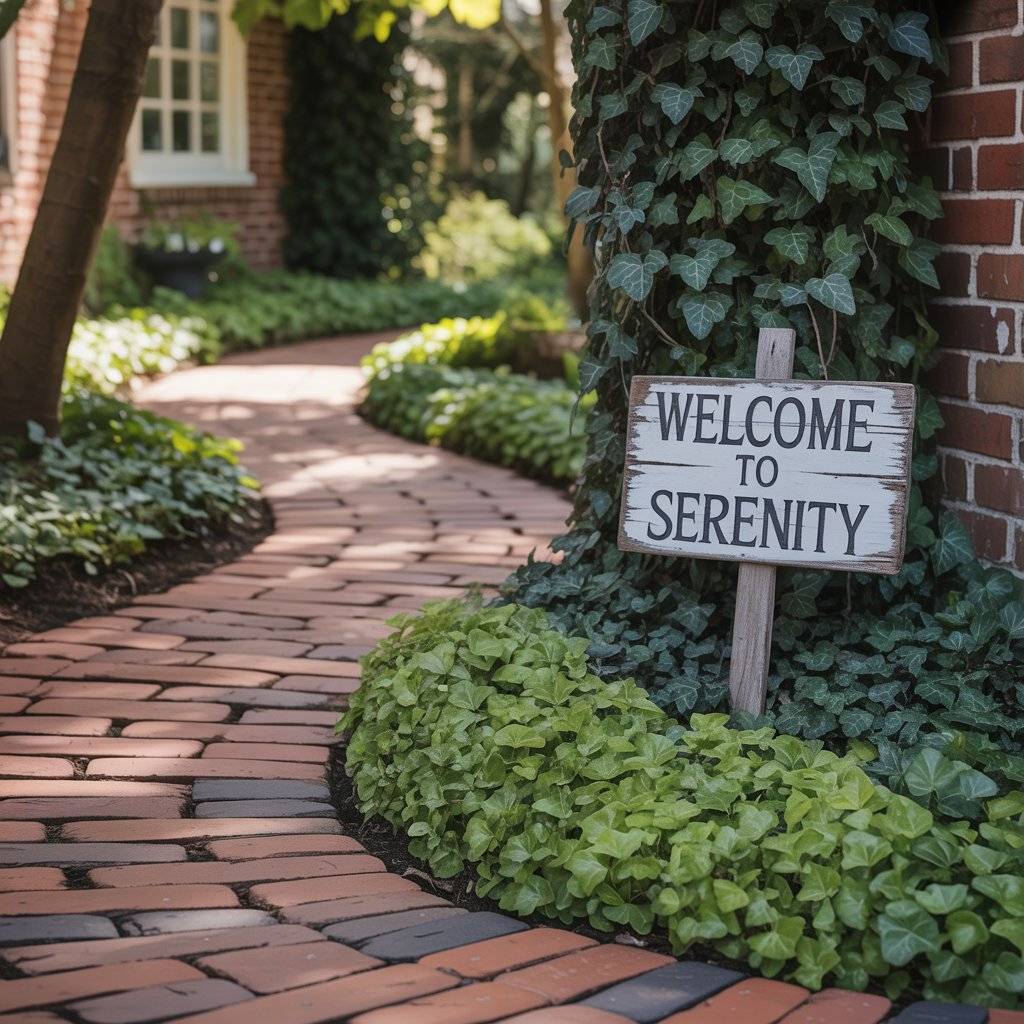
5. Stepping Stones Across a Lawn

Simple yet effective, stepping stones across a lawn create the feeling of a secret path. Use large, flat stones and space them just a stride apart. You can lay them in a straight line or follow a loose curve. Grass will naturally grow around the stones, creating a blended look.
If you want more magic, choose stones with natural textures or engravings. This option keeps the lawn intact while still guiding guests to a special destination. It’s ideal for leading to a tree swing, hammock, or shaded bench.
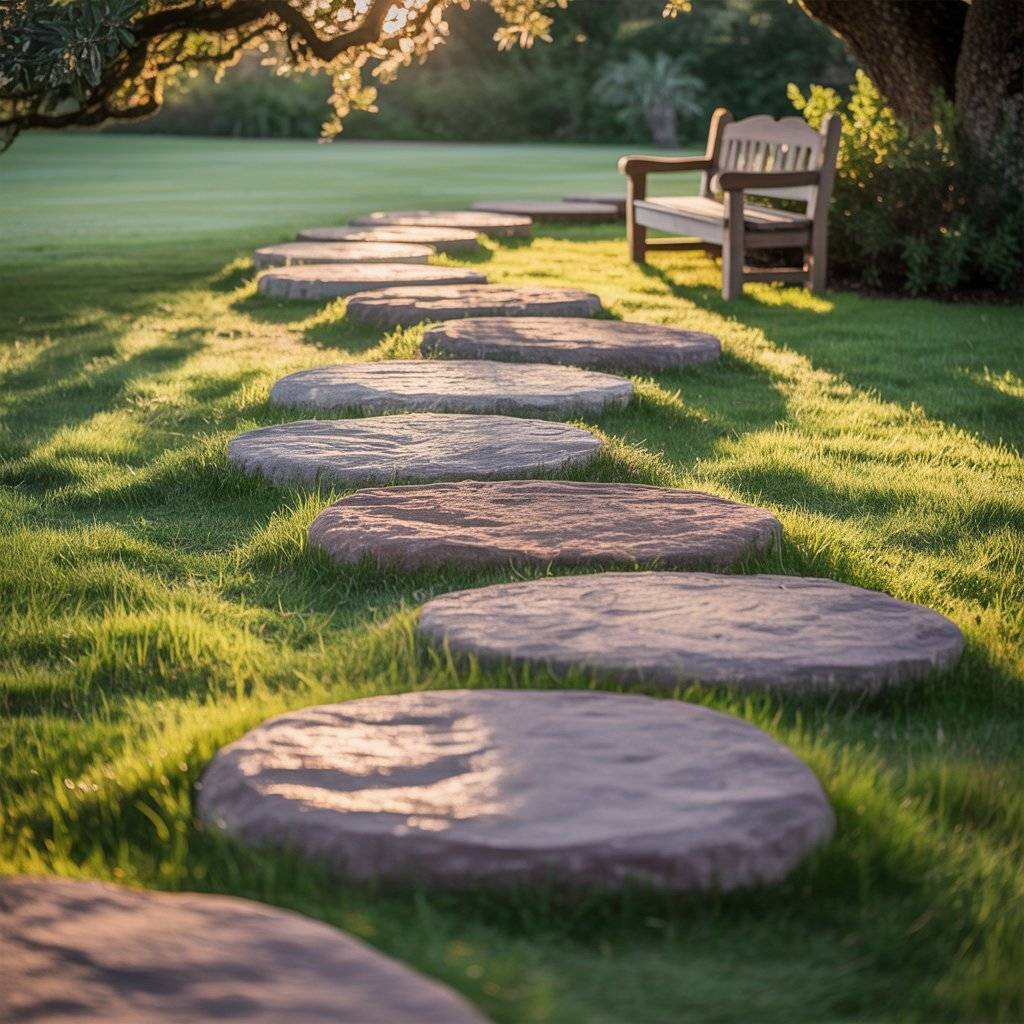
6. Gravel Path Framed by Lavender
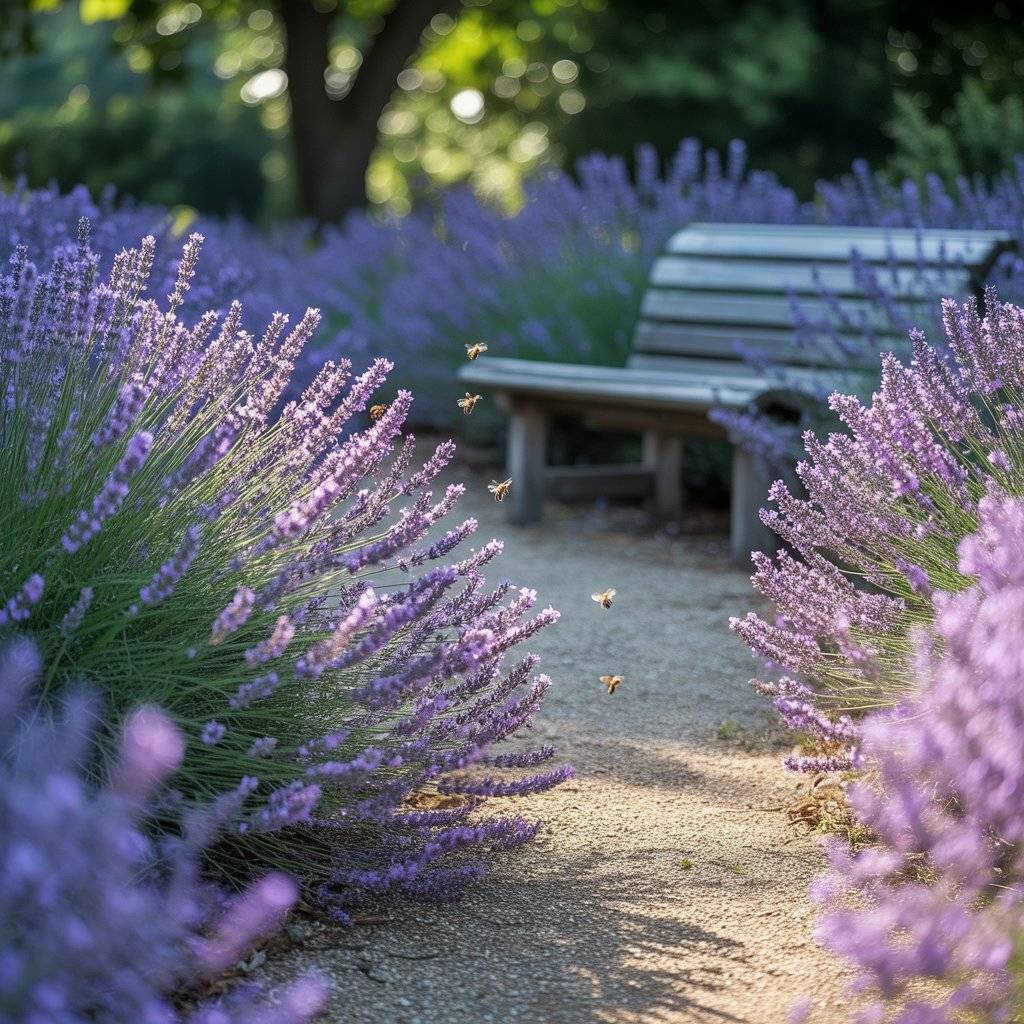
A compact gravel path brings texture and sound to the garden. When you frame it with blooming lavender, it transforms into something truly enchanting. The scent alone creates a calming, dream-like atmosphere.
Lavender also attracts bees and butterflies, adding life to your path. Choose fine gravel for a smoother walk and keep it edged with pavers or wood for structure. This path is perfect for sunny spots and can lead to a reading chair, herb garden, or tea area.

7. Reclaimed Wood Boardwalk
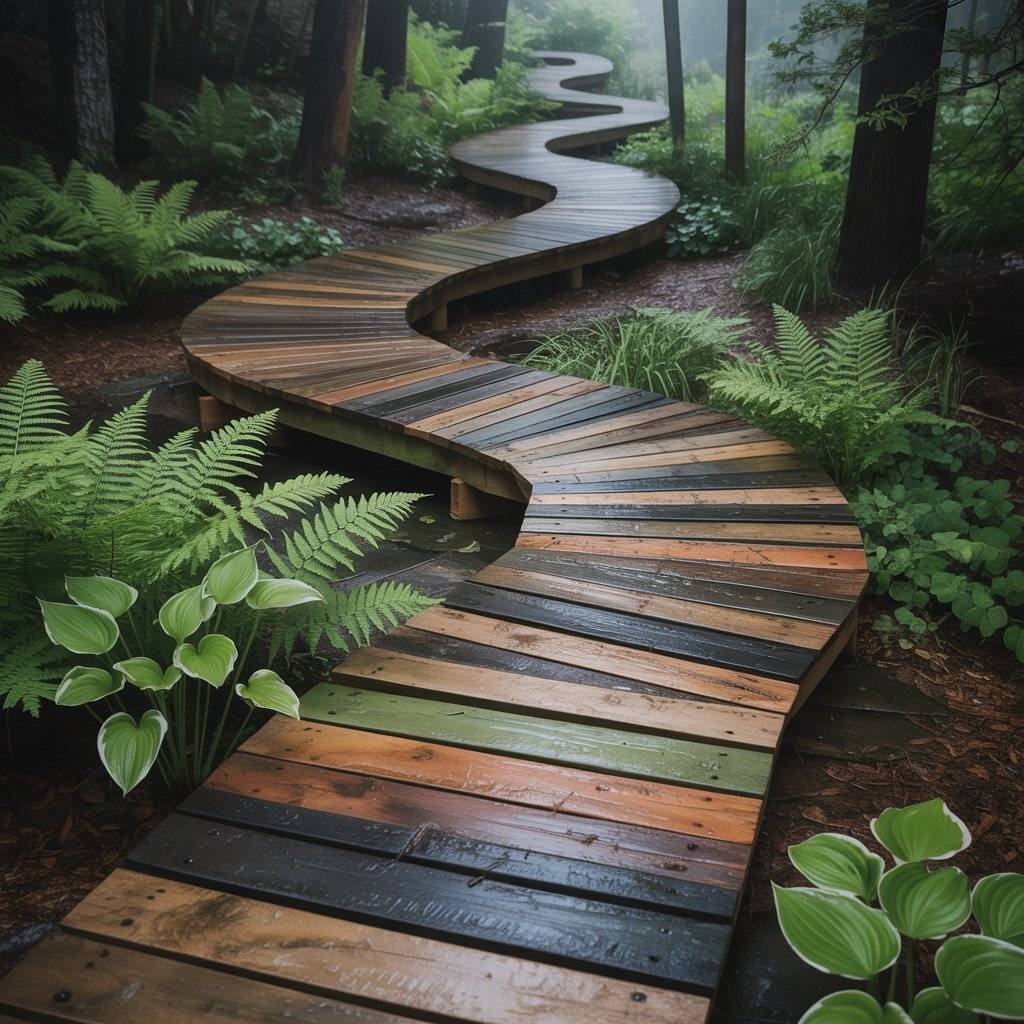
Using reclaimed wood gives your path a rustic charm and eco-conscious appeal. Lay the boards lengthwise, slightly raised off the ground. The result feels like a miniature woodland bridge.
It works best in damp or shaded areas, where traditional materials might not hold up as well. Surround it with ferns or hostas for a lush forest look. Seal the boards for durability, and let nature take care of the rest.
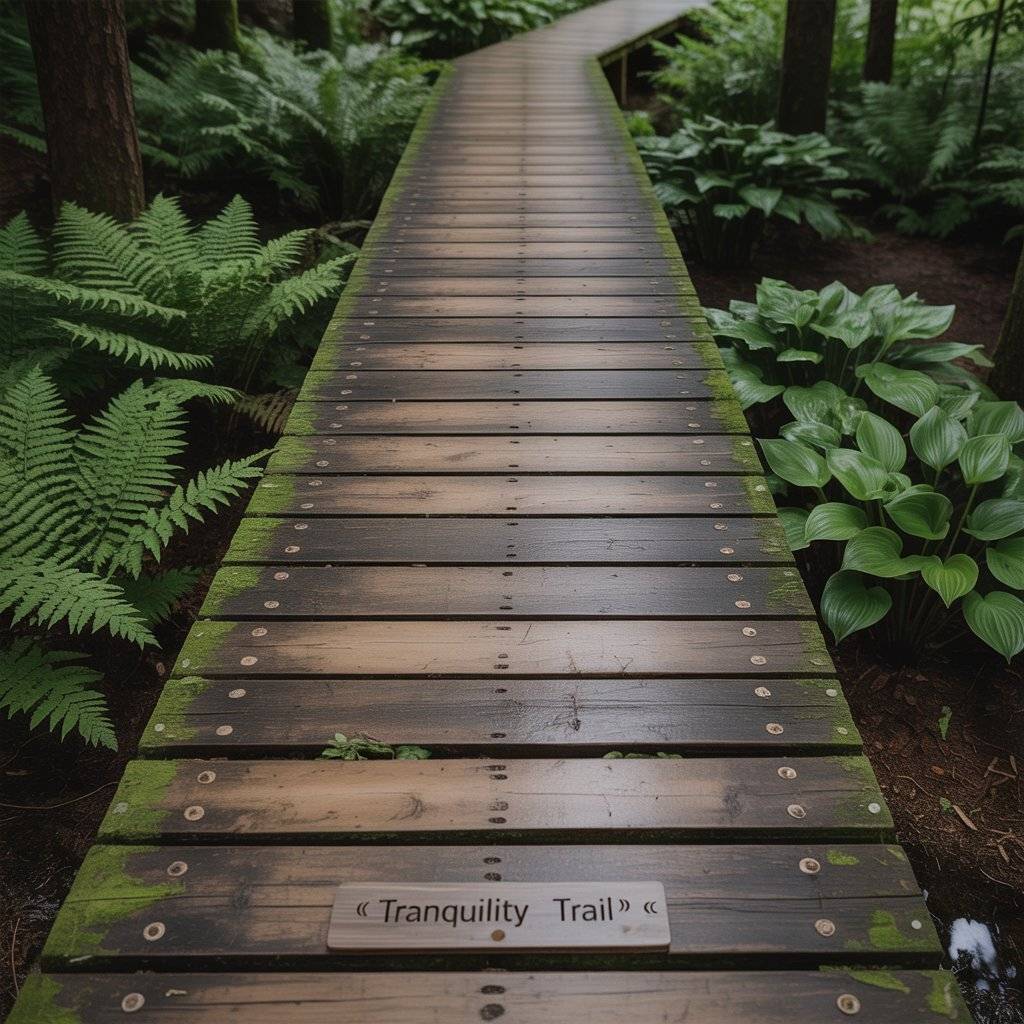
8. Lantern-Lit Garden Walk
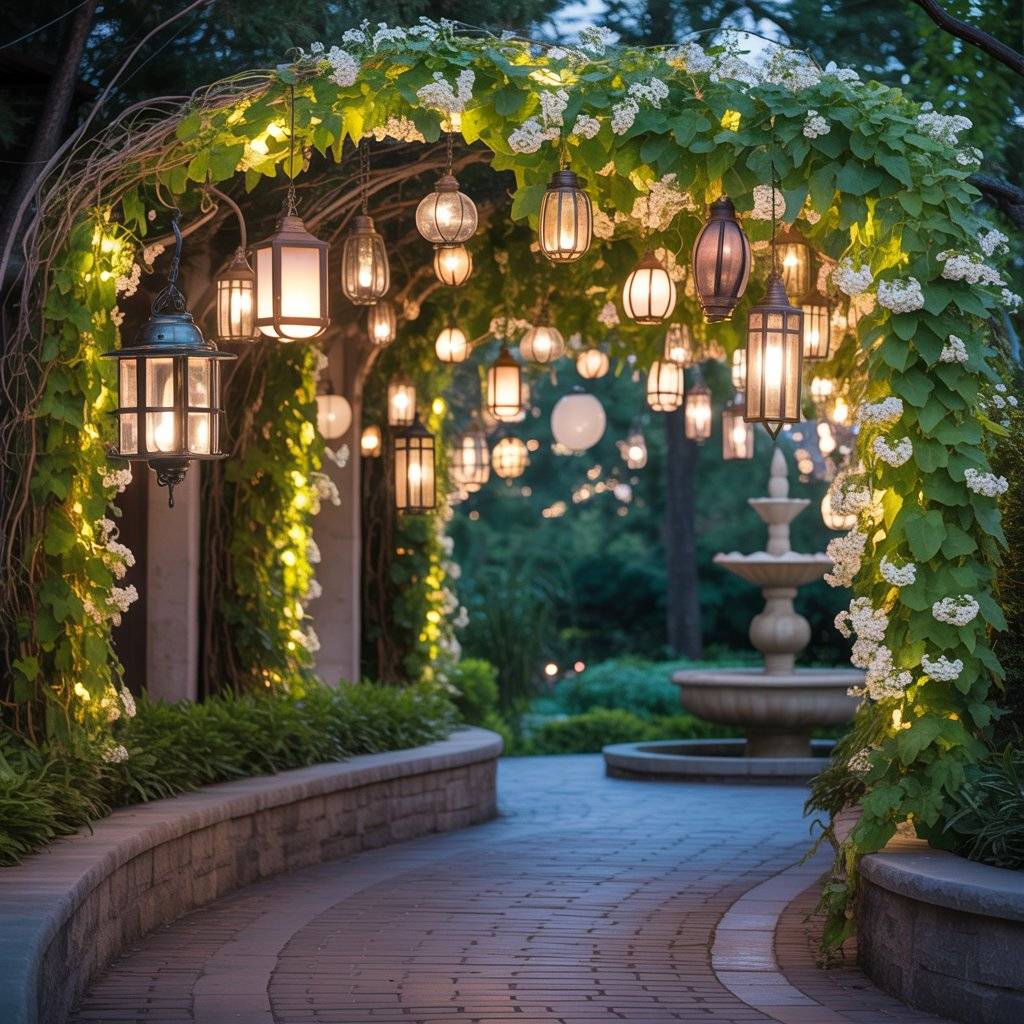
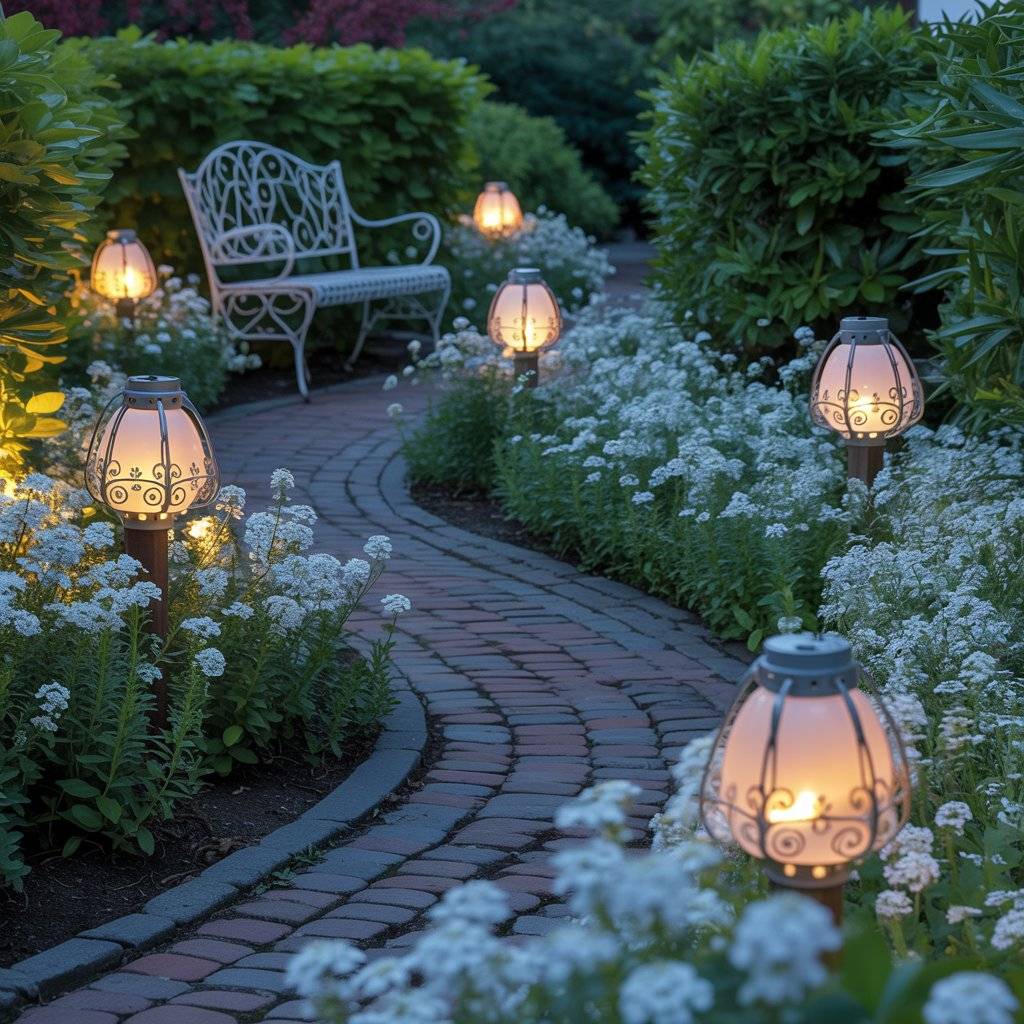
Light creates magic, especially after the sun goes down. A garden path lined with lanterns sets the stage for dreamy evening walks. Use solar-powered lanterns for convenience, or mix in a few battery-powered or plug-in options for brighter sections.
You can hang them from shepherd’s hooks or place them directly on the ground. For added enchantment, include vines or flowers that glow in low light, such as white alyssum or evening primrose.

9. Archway-Accented Path
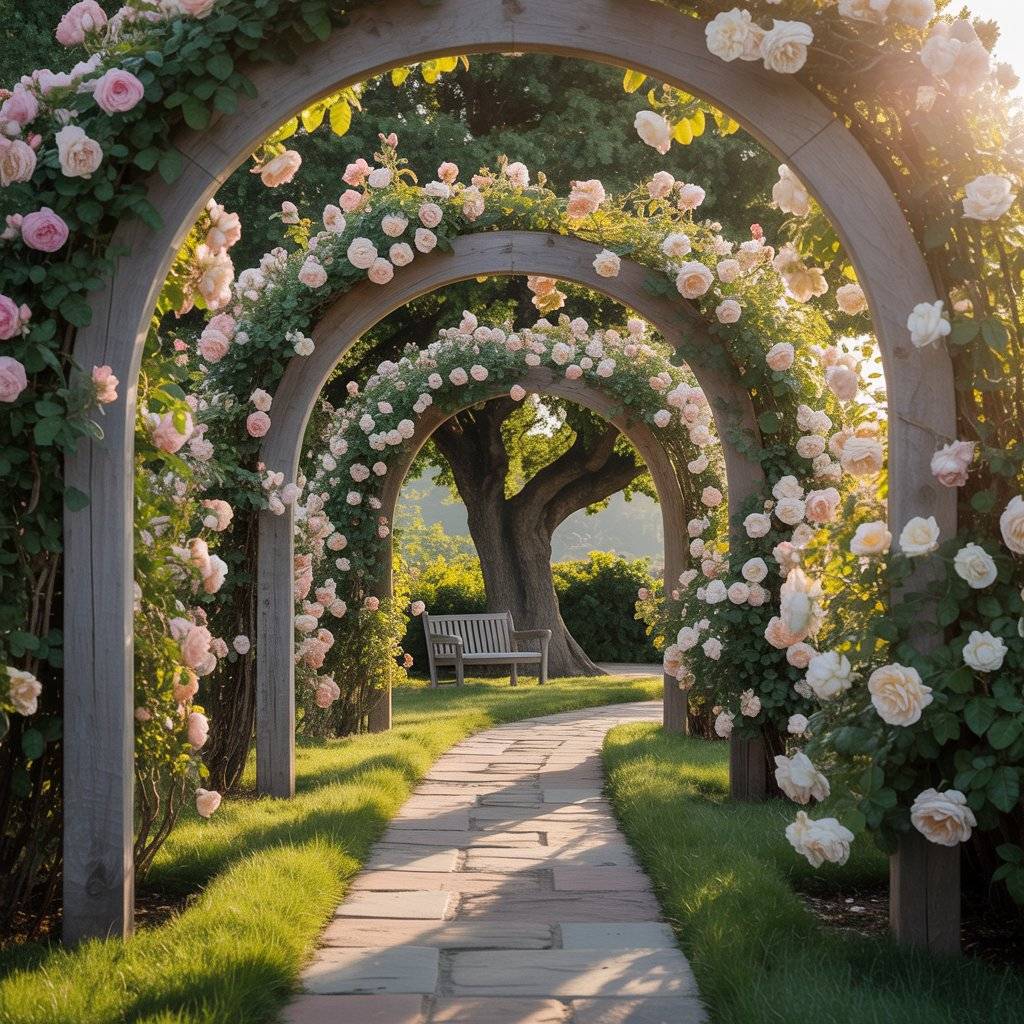
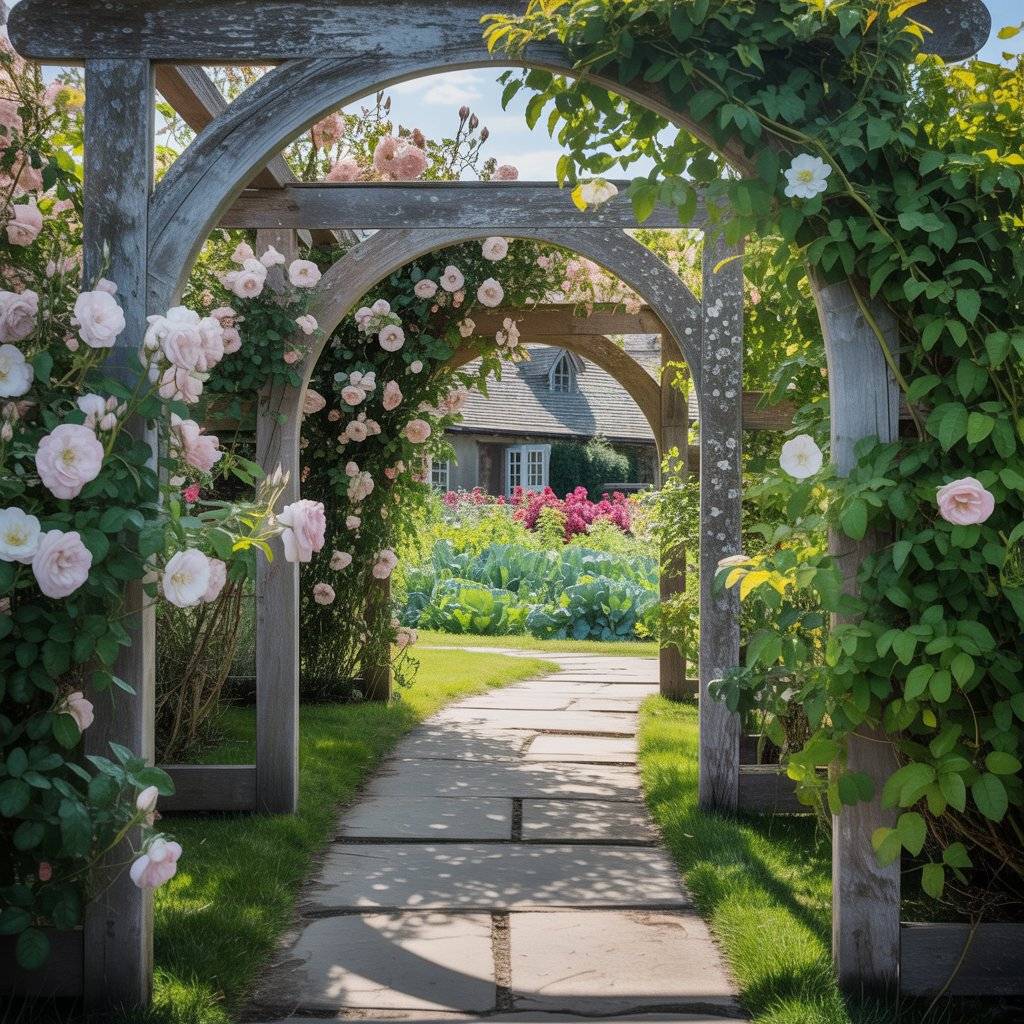
Frame your path with one or more archways made from wood, metal, or willow branches. Let climbing roses, clematis, or honeysuckle grow over them.
These archways turn your path into an experience like entering a hidden realm. Use them at transitions in your garden, like the entry to a seating area or vegetable patch. They provide shade, color, and a touch of garden drama.
Relate Post: Inspiring Potting Station Setups for a Dreamy Backyard Garden
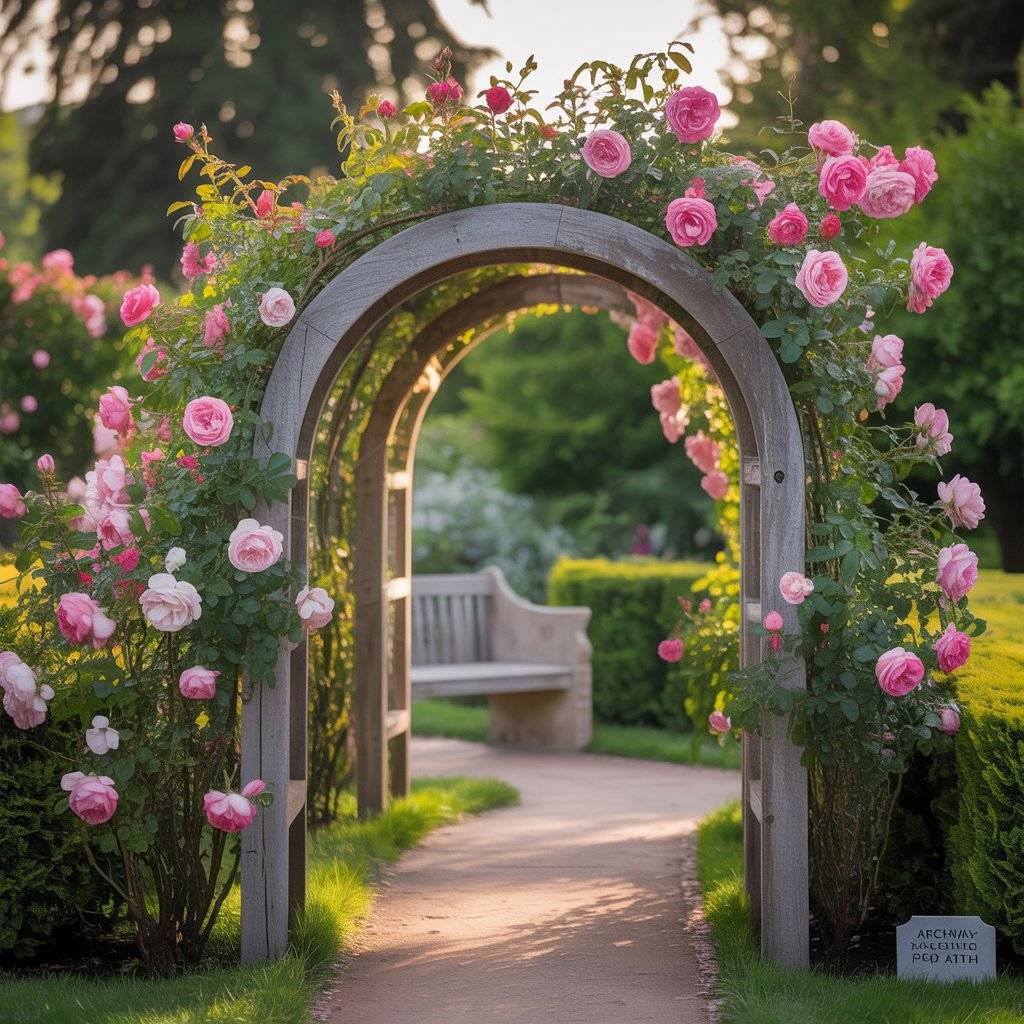
10. Pine Needle Forest Trail
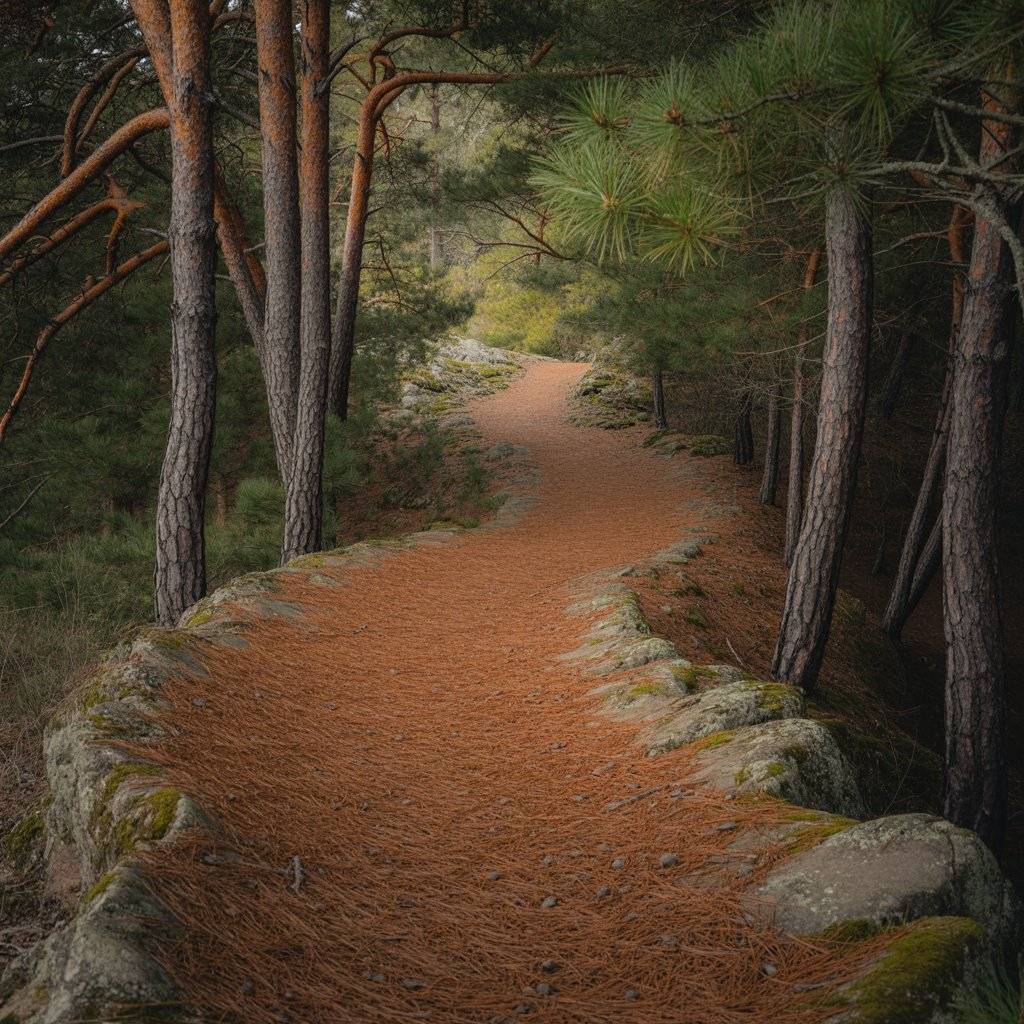
If you have pine trees in your yard, turn their shed needles into a soft, natural path. Pine needles layer easily and stay in place with minimal effort.
Their reddish-brown tone adds warmth, and the scent enhances the woodland vibe. Line the trail with log borders or stones to define the shape. This option feels like stepping through a forest floor quiet, soft, and grounding.

11. Cobblestone Path with Fern Edges
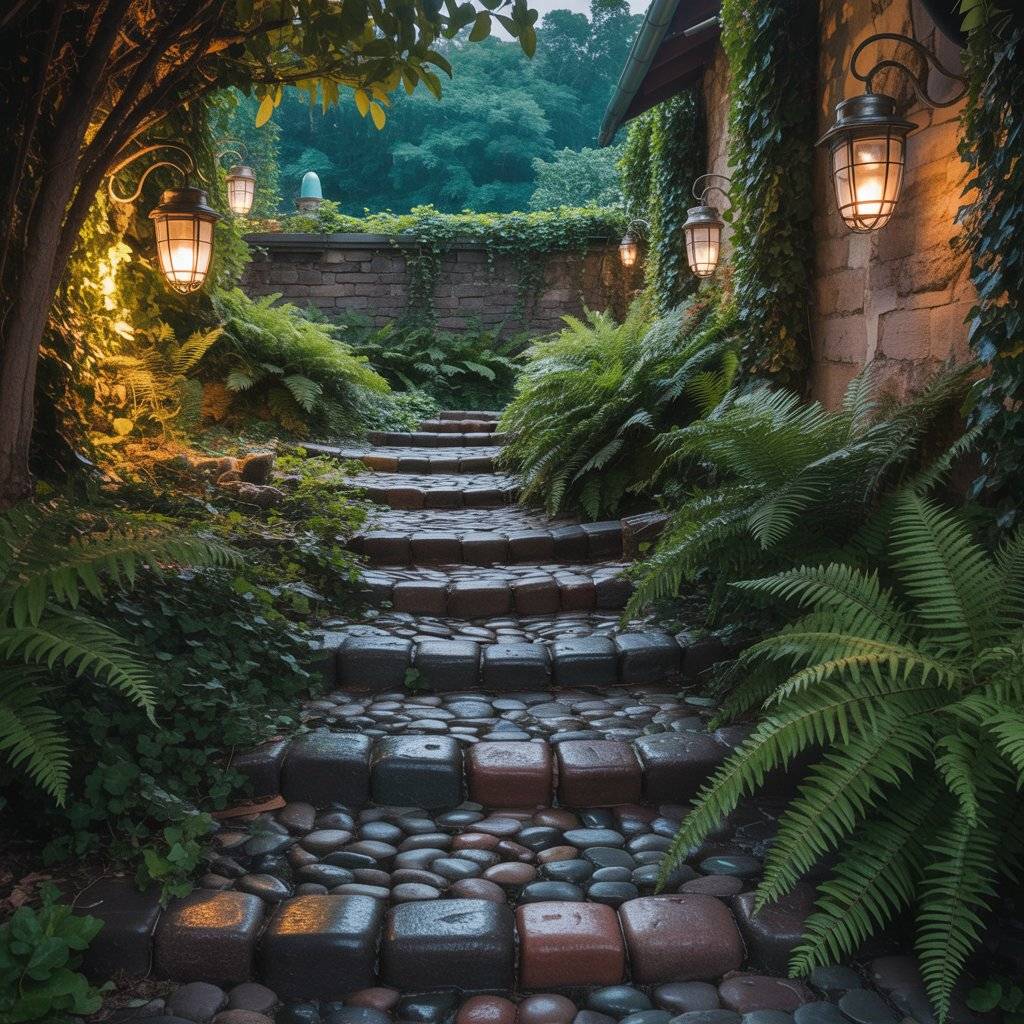
Cobblestone brings old-world charm to a garden, like stepping into a village from a fairy tale. Use rounded, weathered stones set close together for a classic look. The texture adds interest, and the uneven surface gives a sense of age.
Add ferns along the edges for softness and lush greenery. They love shade and pair beautifully with cobblestone’s cool tones. A few antique-style lanterns or wrought-iron accents will make this path feel like it’s part of a hidden forest glade.
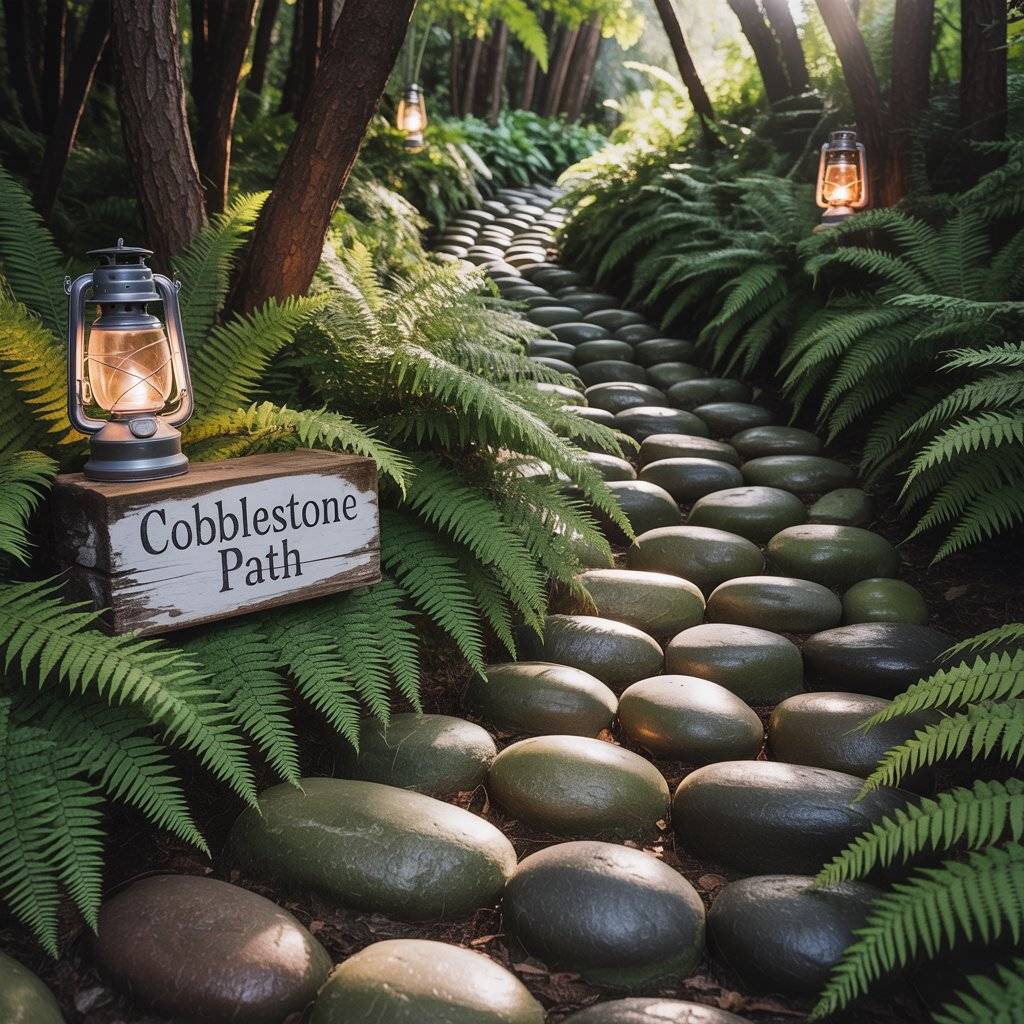
Raised Wooden Boardwalk Over Groundcover
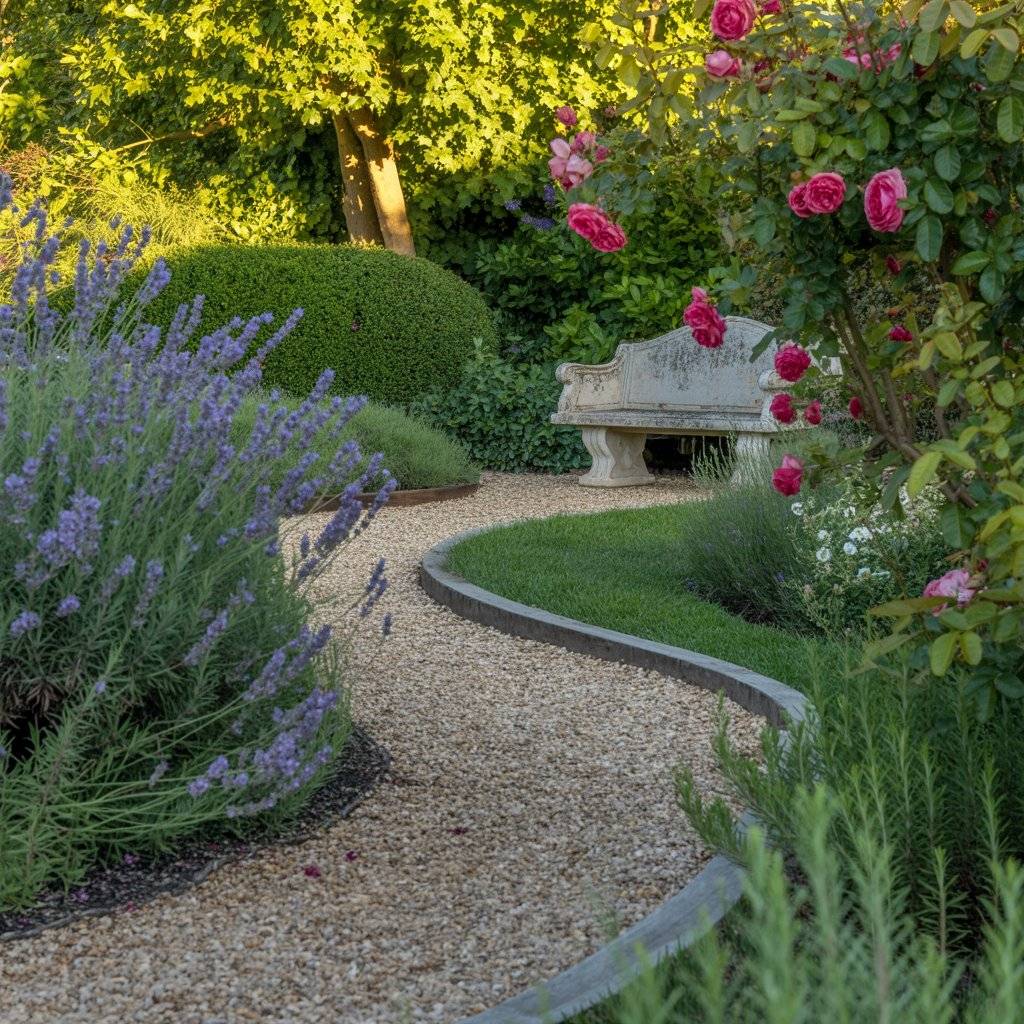
Create a path that feels like a bridge to another world with a raised wooden boardwalk. Use pressure-treated wood or composite decking, especially in damp areas.
Let the boardwalk glide gently over moss, creeping thyme, or shade-loving groundcovers. This design keeps your feet dry and highlights the greenery below. It’s especially striking through wooded areas or marshy gardens. Add rope railings or solar lanterns for extra flair.
A winding gravel path gently weaving through your garden can feel like a quiet escape. Instead of sharp corners or straight lines, the curves invite a sense of calm and movement. Frame the path with fragrant plants like creeping thyme, rosemary, or lemon balm, which release their scent as you brush past.
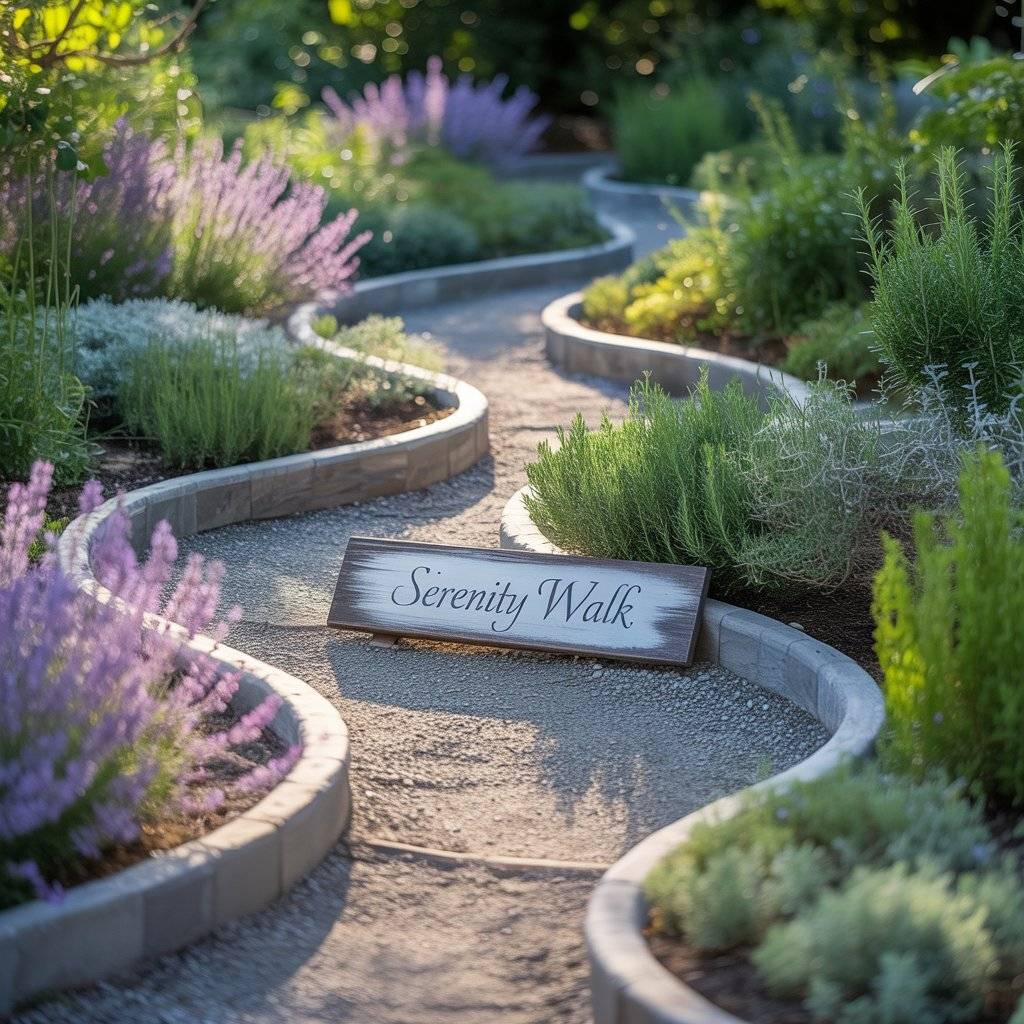
The gravel adds texture and soft crunch underfoot, while the herbs provide color, comfort, and a sensory experience. For added charm, include solar lanterns tucked low near the borders to give a soft glow in the evening. This path doesn’t just guide your way it invites you to slow down and breathe in the beauty of your surroundings.
13. Raised Wooden Boardwalk Over Groundcover
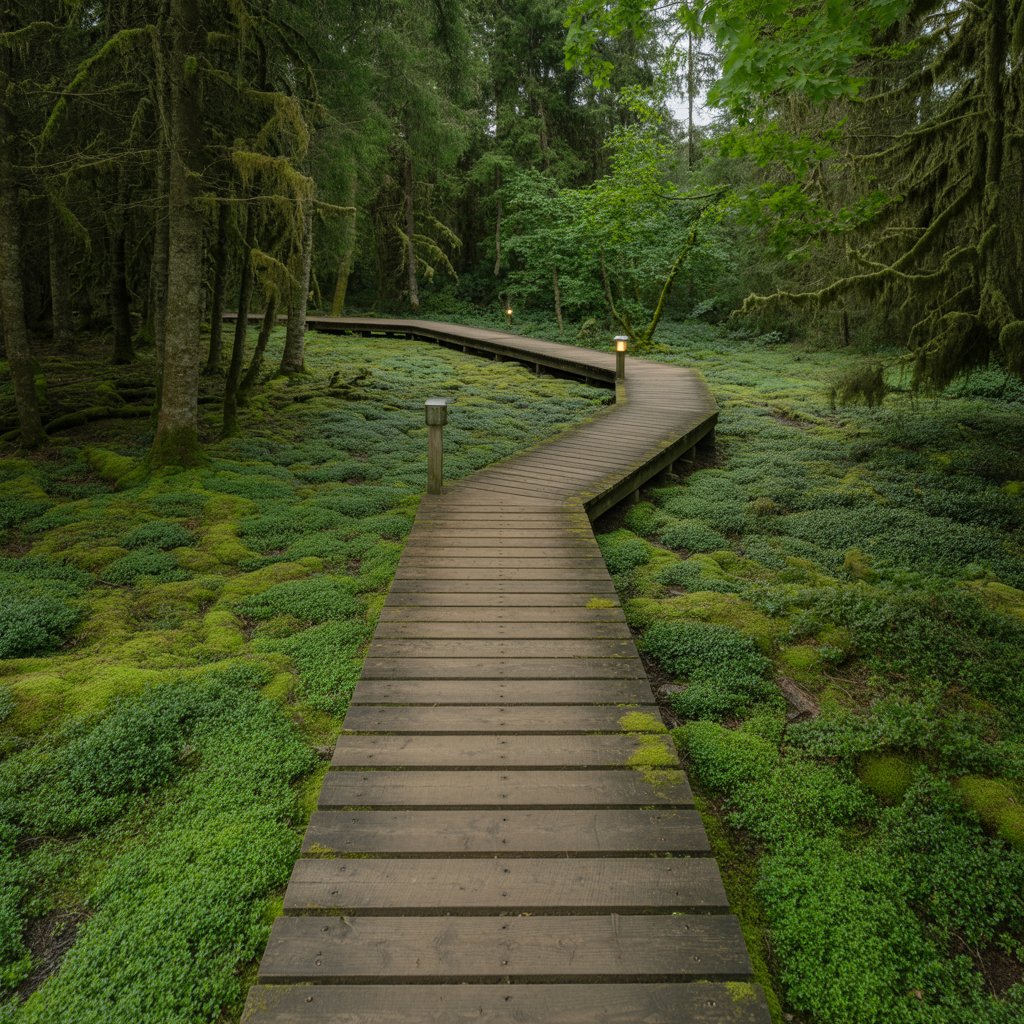
Create a path that feels like a bridge to another world with a raised wooden boardwalk. Use pressure-treated wood or composite decking, especially in damp areas.
Let the boardwalk glide gently over moss, creeping thyme, or shade-loving groundcovers. This design keeps your feet dry and highlights the greenery below. It’s especially striking through wooded areas or marshy gardens. Add rope railings or solar lanterns for extra flair.
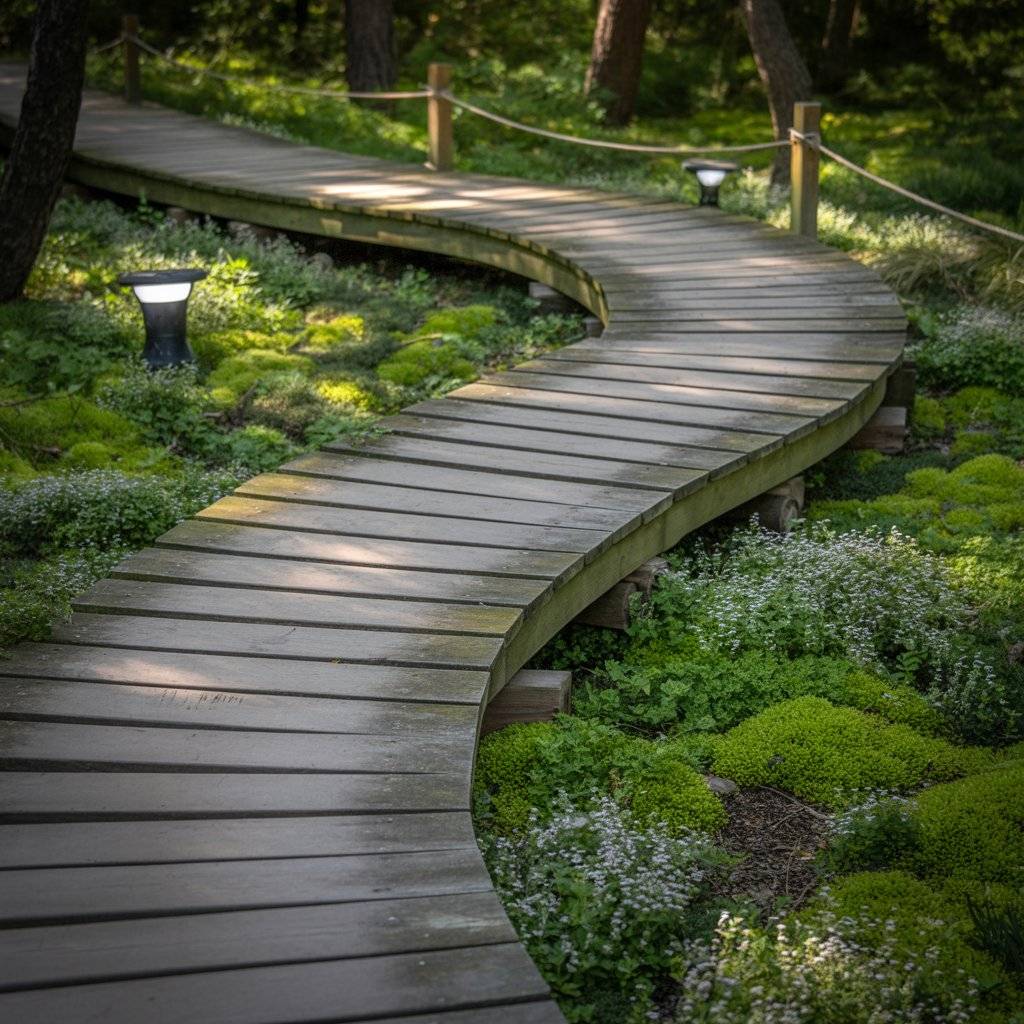
14. Circular Paver Steps Through a Flower Field
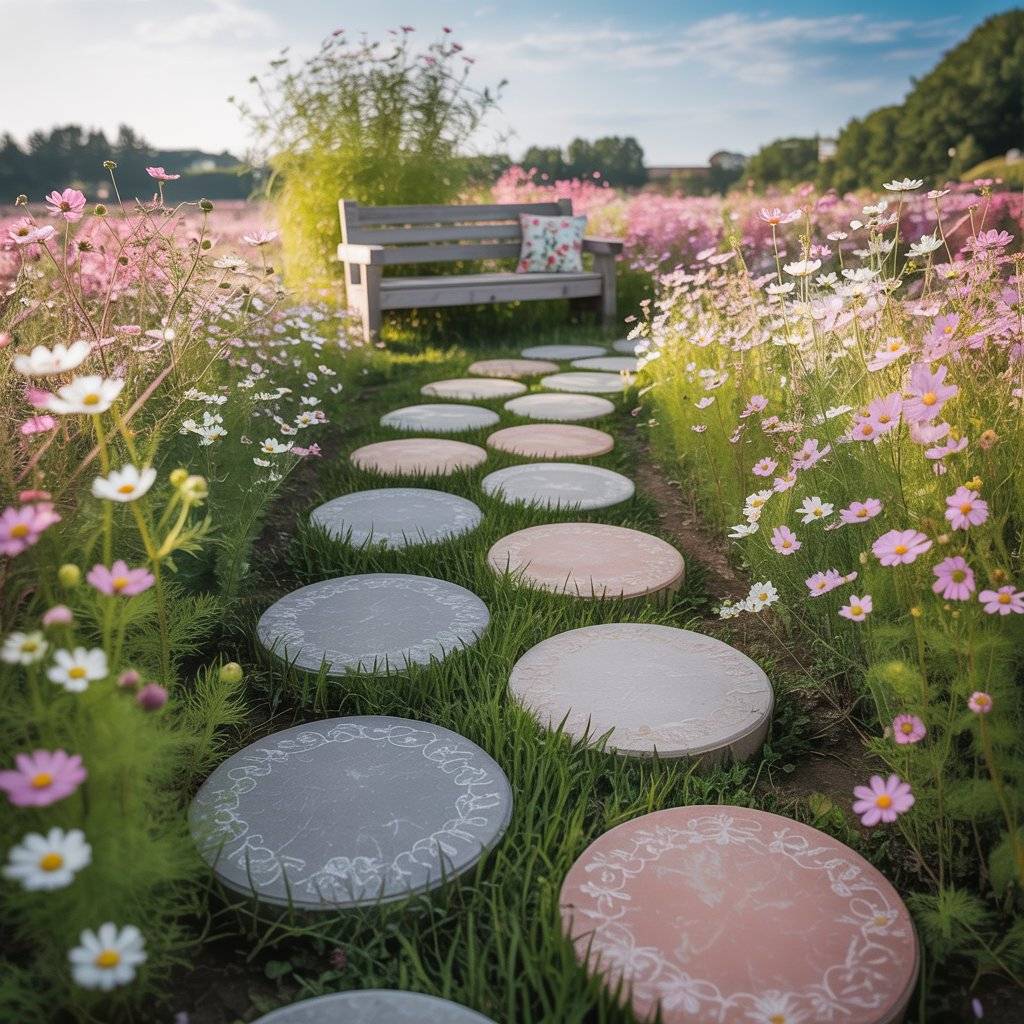
Large, round pavers set into a flower-filled garden create a playful, fairytale vibe. Space the circles a few inches apart so the blooms peek through.
Choose flowers like cosmos, alyssum, or chamomile for a soft and airy look. This style feels informal and joyful perfect for leading to a tea table, reading nook, or treehouse. It works best in open areas with good sunlight and lots of blooms.
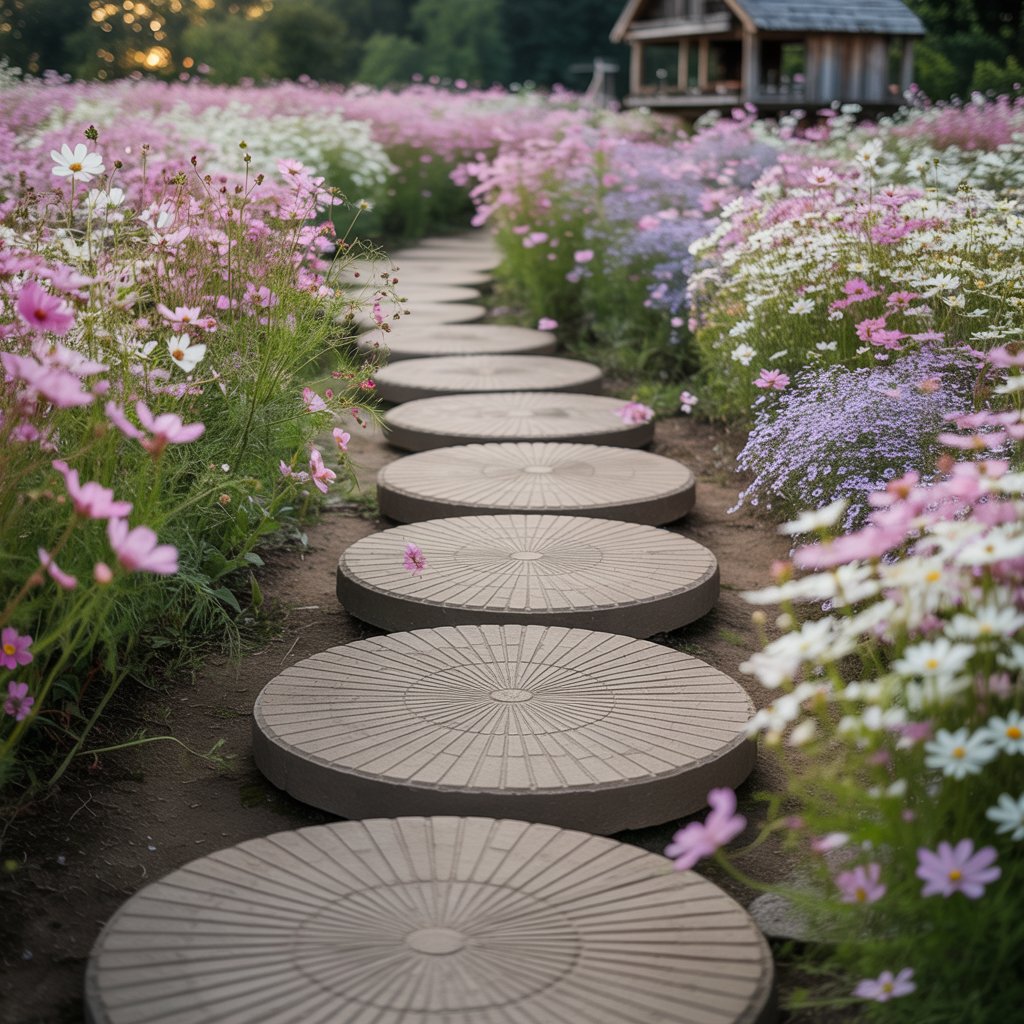
15. Stone Path Leading to a Sculptural Garden Orb

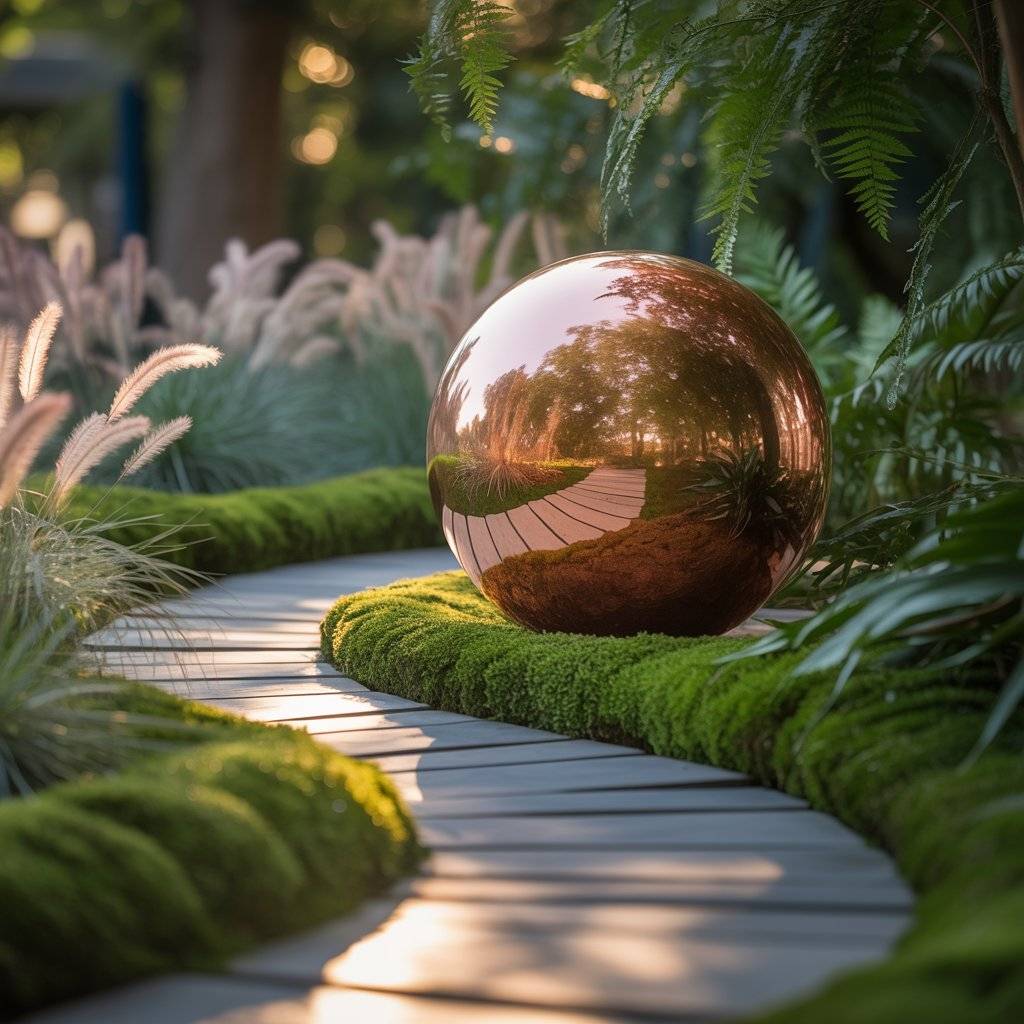
A natural stone path leading to a large sculptural orb can create a mesmerizing destination within your garden. The orb might be made of polished granite, brushed copper, or even glass, and it acts as a focal point nestled among foliage. This kind of design feels otherworldly and intentional.
Surround it with soft moss, ferns, or ornamental grasses to elevate the sense of wonder. These orbs don’t just sit there they reflect light and draw the eye, encouraging guests to explore. Place the path on a gentle curve so the final reveal feels more magical as you approach. It’s a subtle but powerful way to turn a path into a moment of discovery.

16. Moss Carpet Path Under Tree Canopy
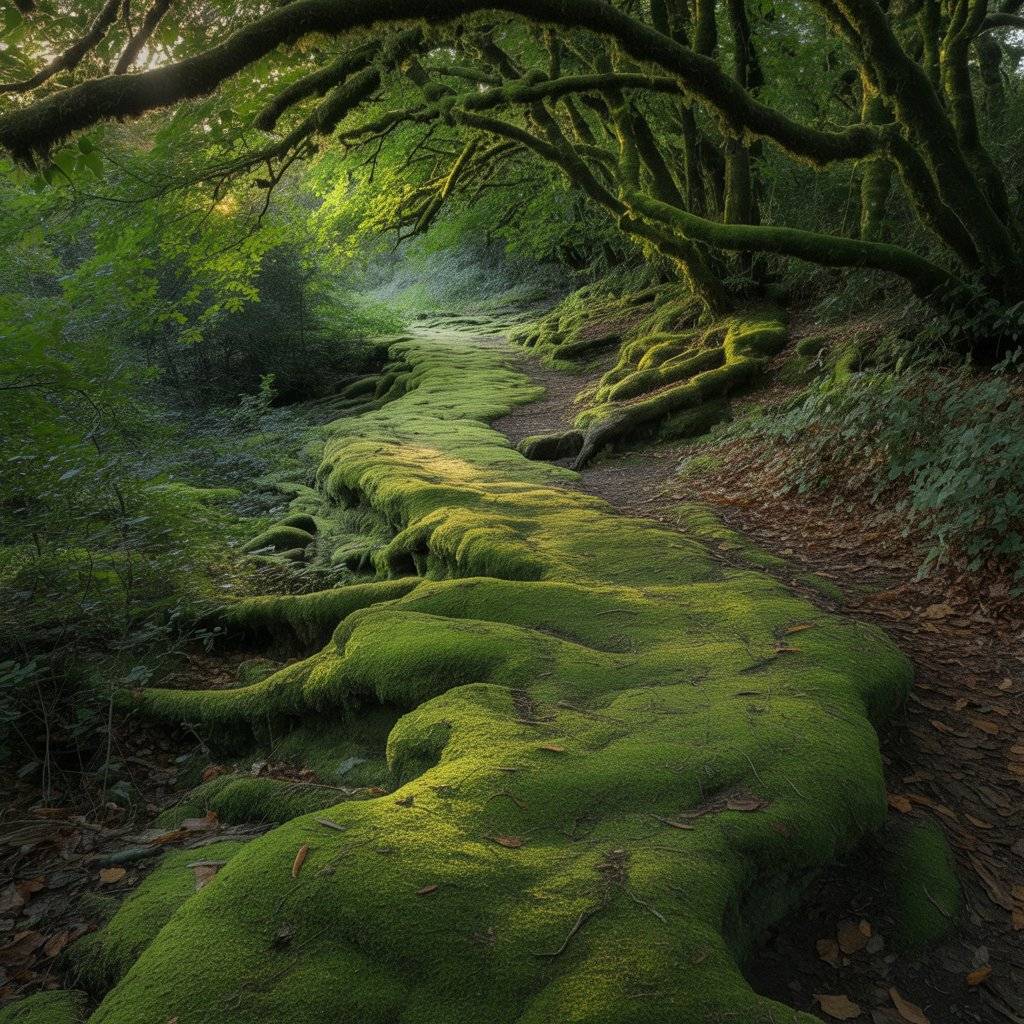
In shaded areas, a moss carpet makes for an unforgettable path. Skip the stones and let soft moss take center stage. Moss thrives in damp, cool conditions, especially under trees.
You can walk barefoot here it’s that soft. To create it, clear the area, press down moss patches, and keep it moist. A path like this feels serene and untouched, like something from a woodland fantasy. Keep decorations minimal to let the green take over.
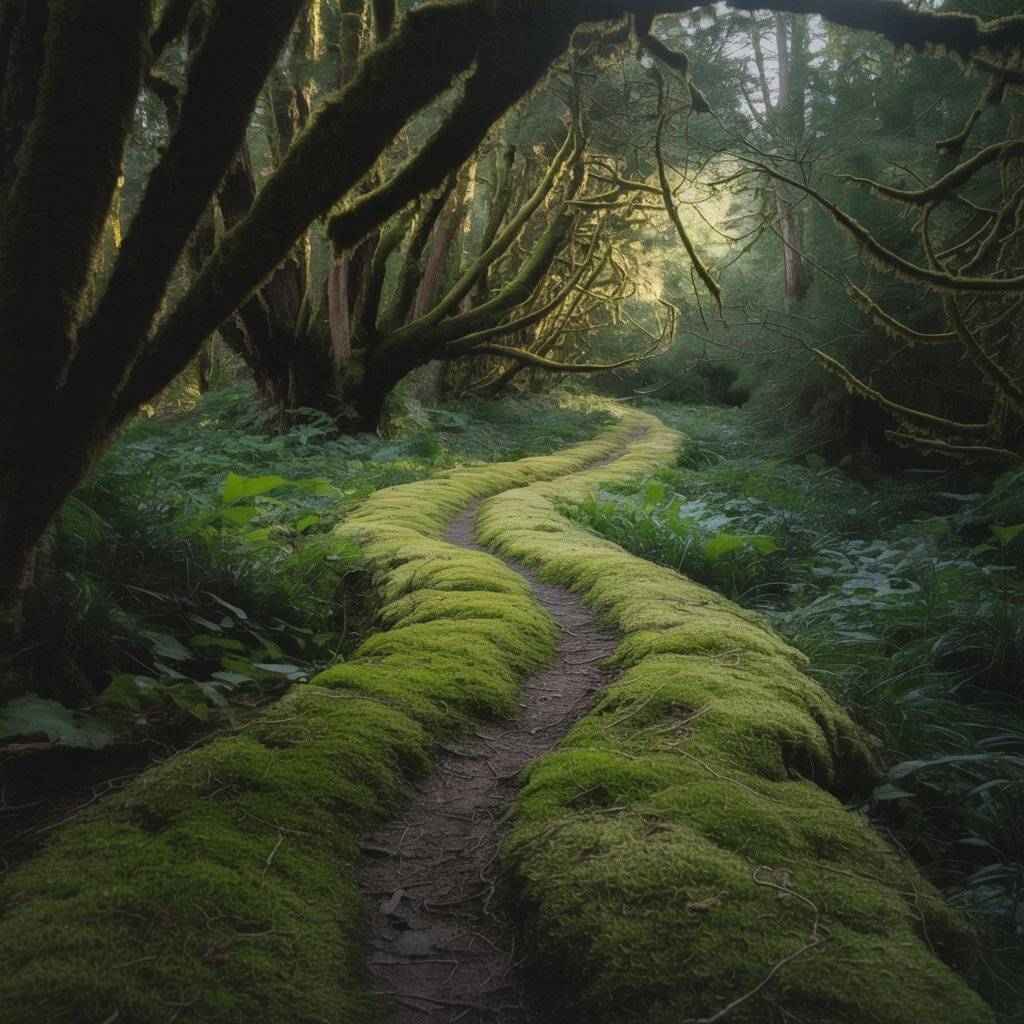
17. Lantern-Lit Path with Solar Stake Lights
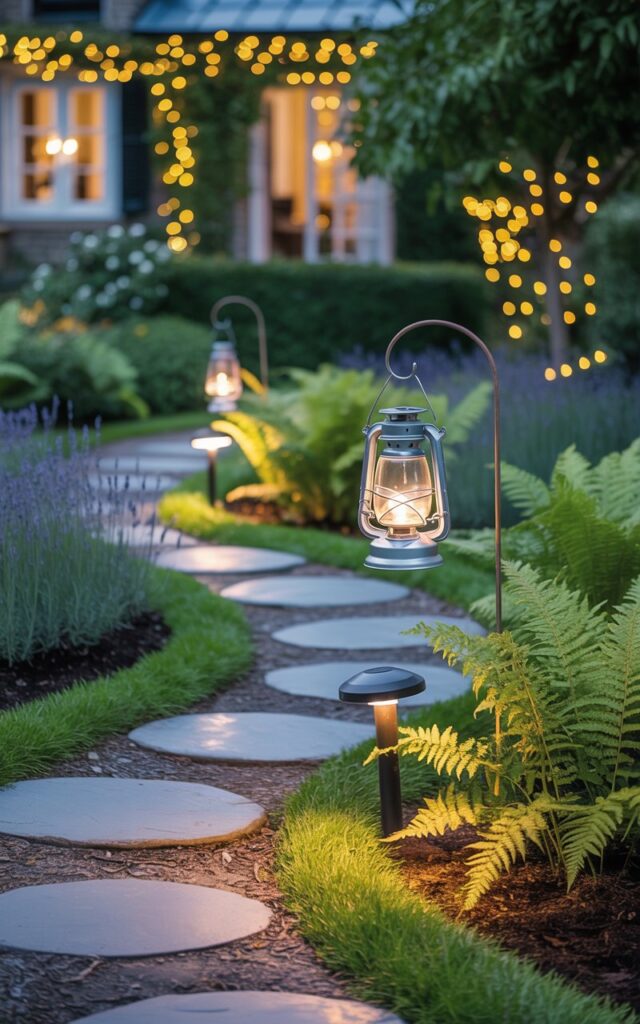
For nighttime magic, install solar stake lights or hanging lanterns along your path. Choose warm white lights for a soft glow.
They work well with any surface gravel, stone, or mulch and add safety while looking beautiful. To create a true fairytale feel, use lanterns with vintage or floral designs. Combine this with a winding path to make each step feel like part of a magical journey.
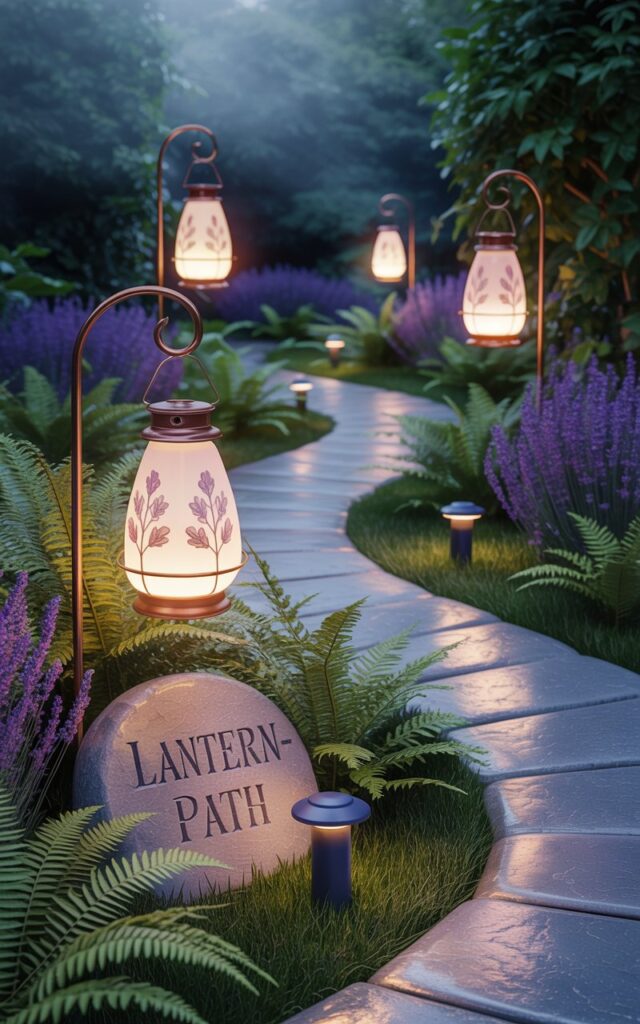
18. Checkerboard Grass and Stone Path
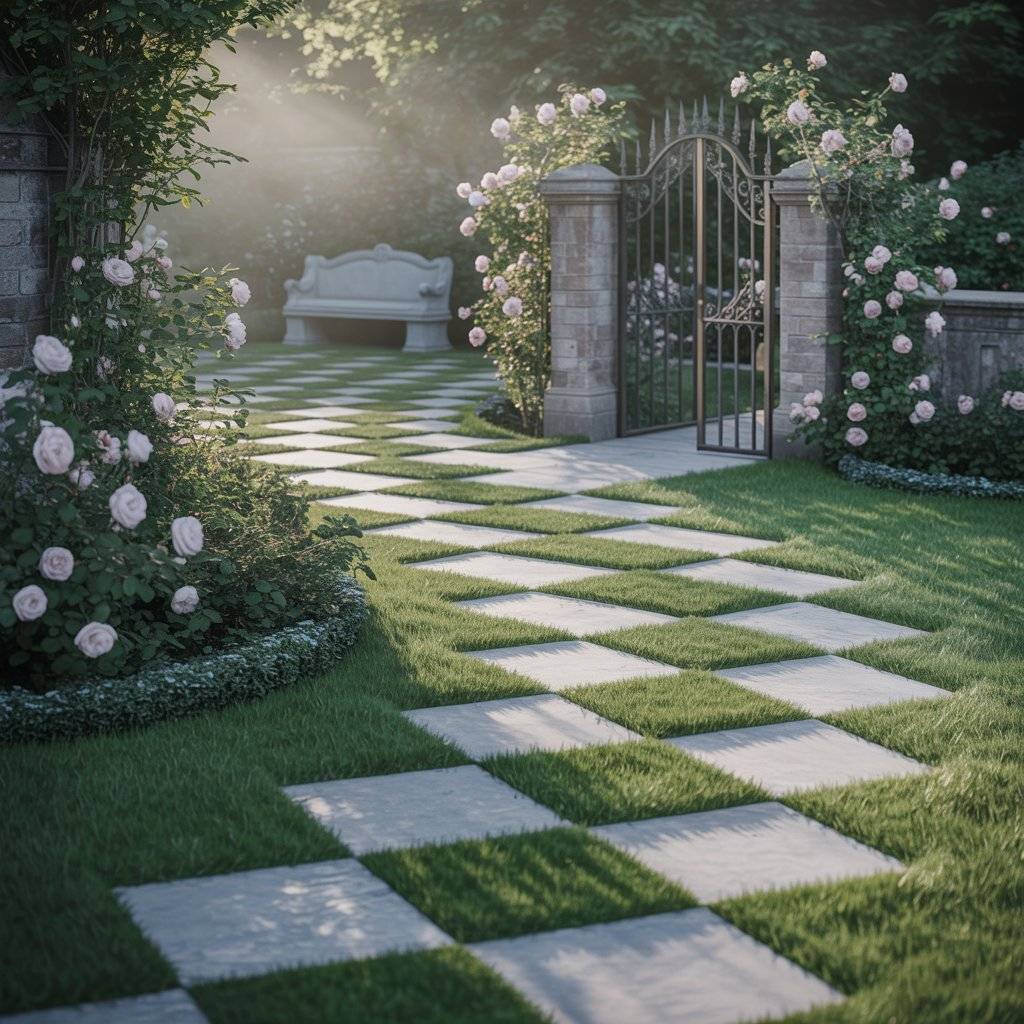
Create a whimsical checkerboard by alternating square stones with grass. This pattern is bold, neat, and eye-catching. It’s ideal for flat, open spaces where you want a clean yet creative design.
The contrast between stone and green adds structure without feeling too formal. This type of path works well in English gardens or as a playful feature in a backyard tea area.
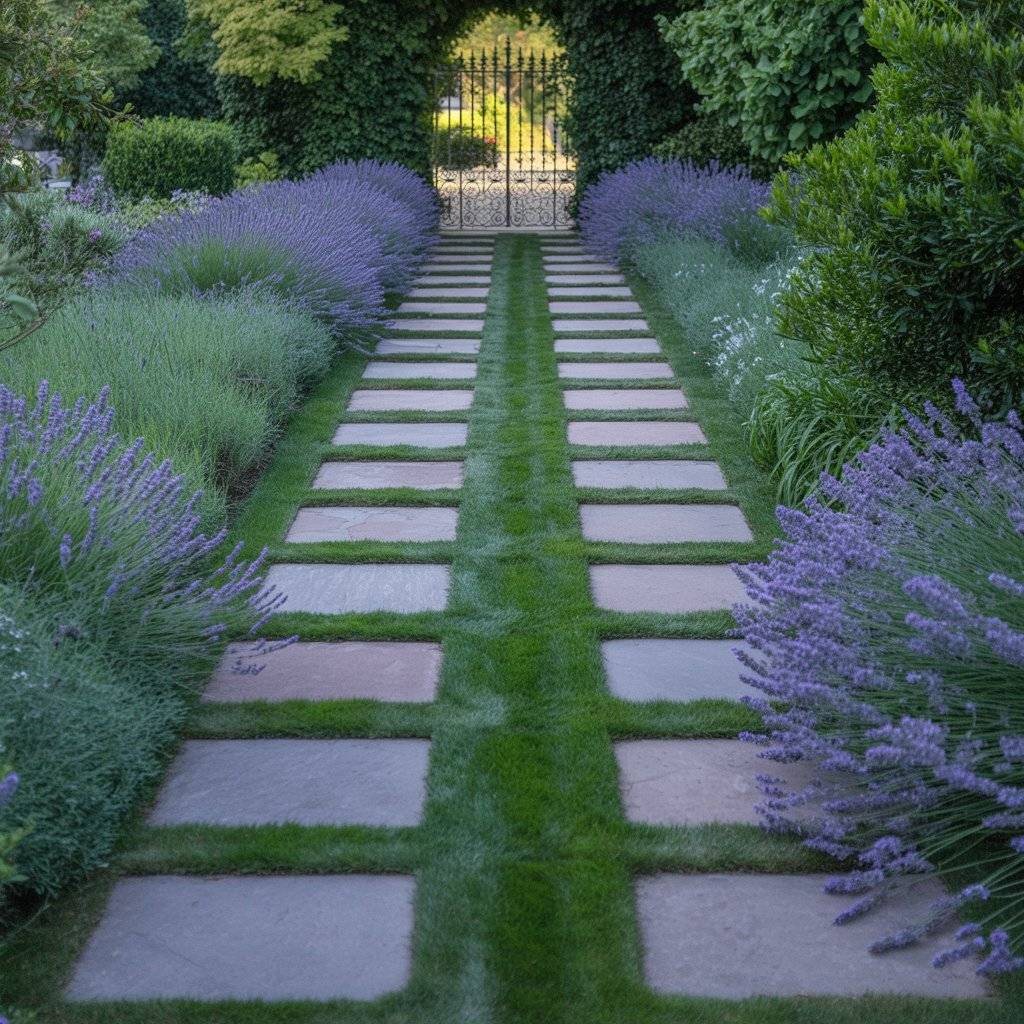
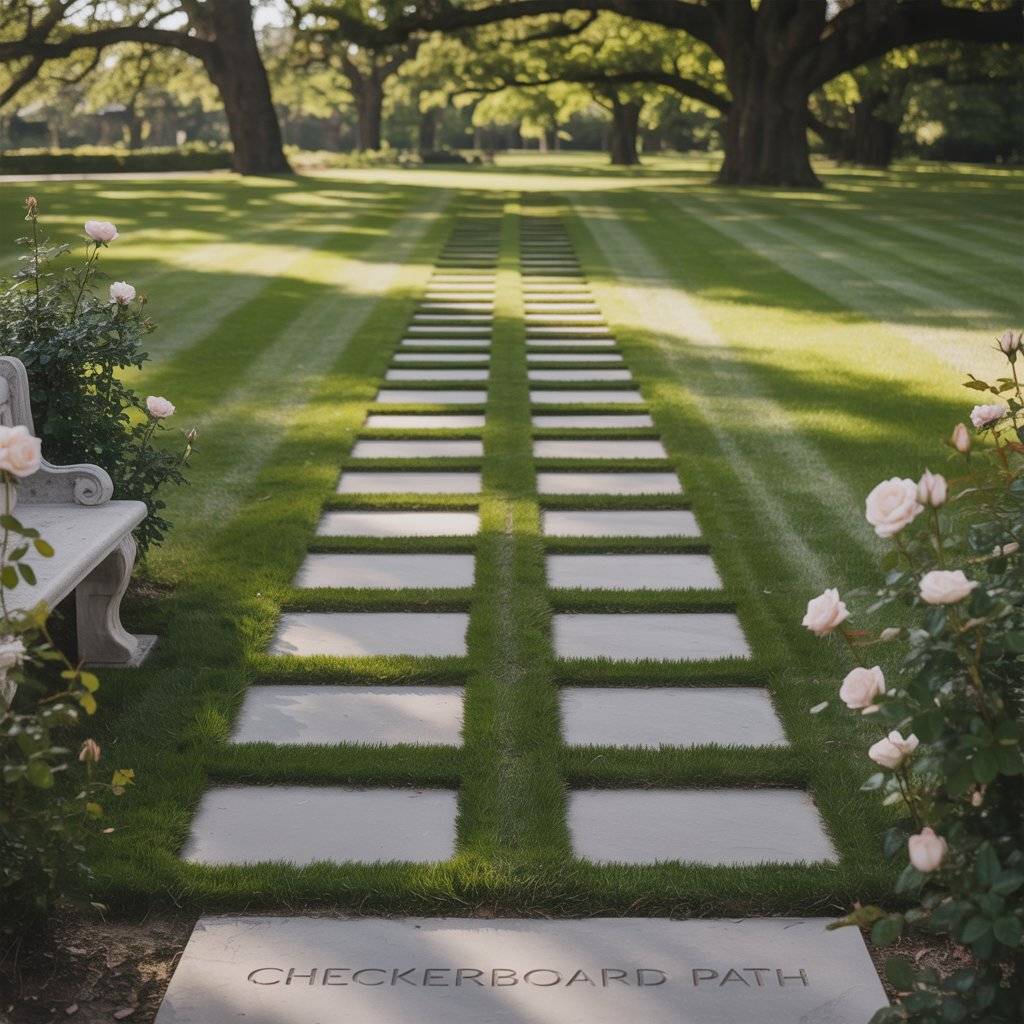
19. Bamboo-Edged Path with Smooth River Rocks

Use bamboo edging to line a path filled with smooth river rocks or pebbles. The bamboo adds an exotic touch, while the stones feel natural and calming.
This path style fits well in Zen or tropical gardens. Add small sculptures or a water feature nearby to enhance the atmosphere. Keep plantings simple with ferns or hostas so the texture of the rocks and bamboo stands out.
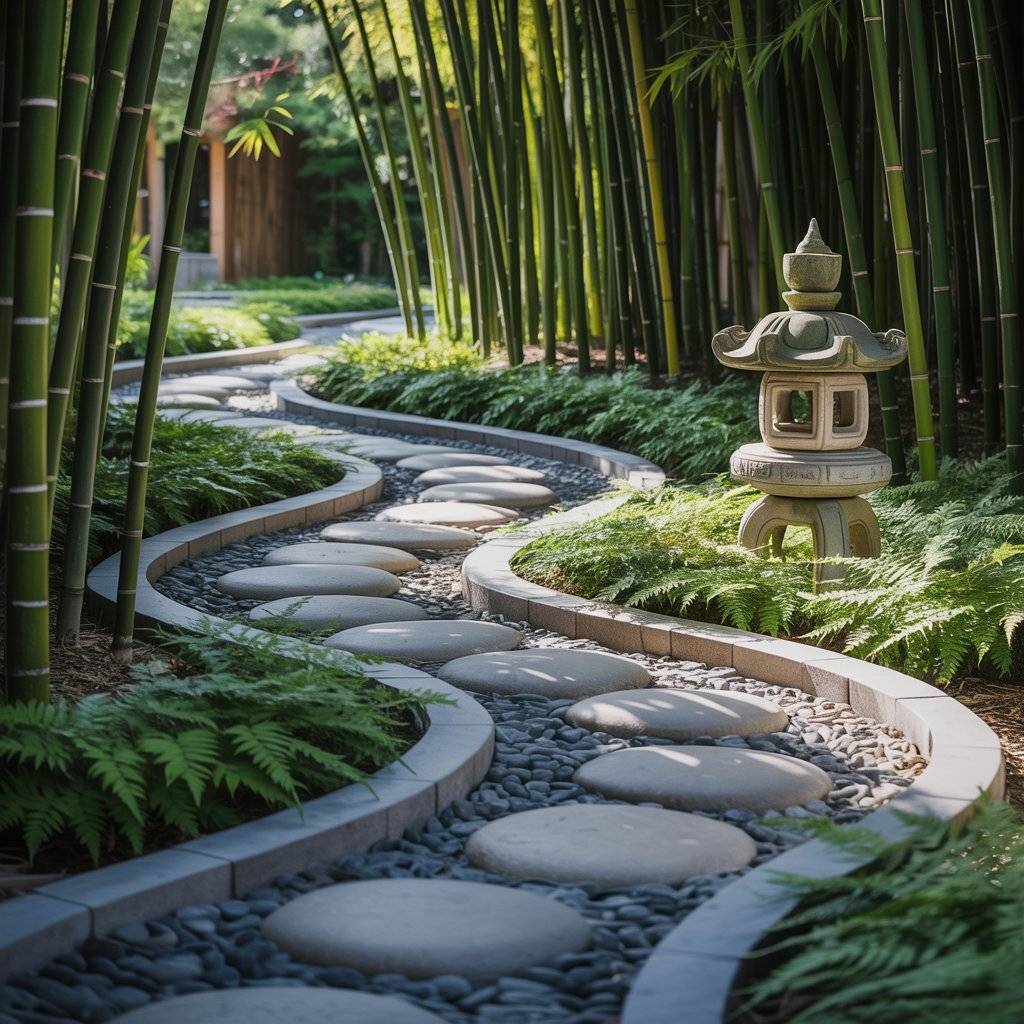
20. Mulch Trail Through a Vegetable Garden
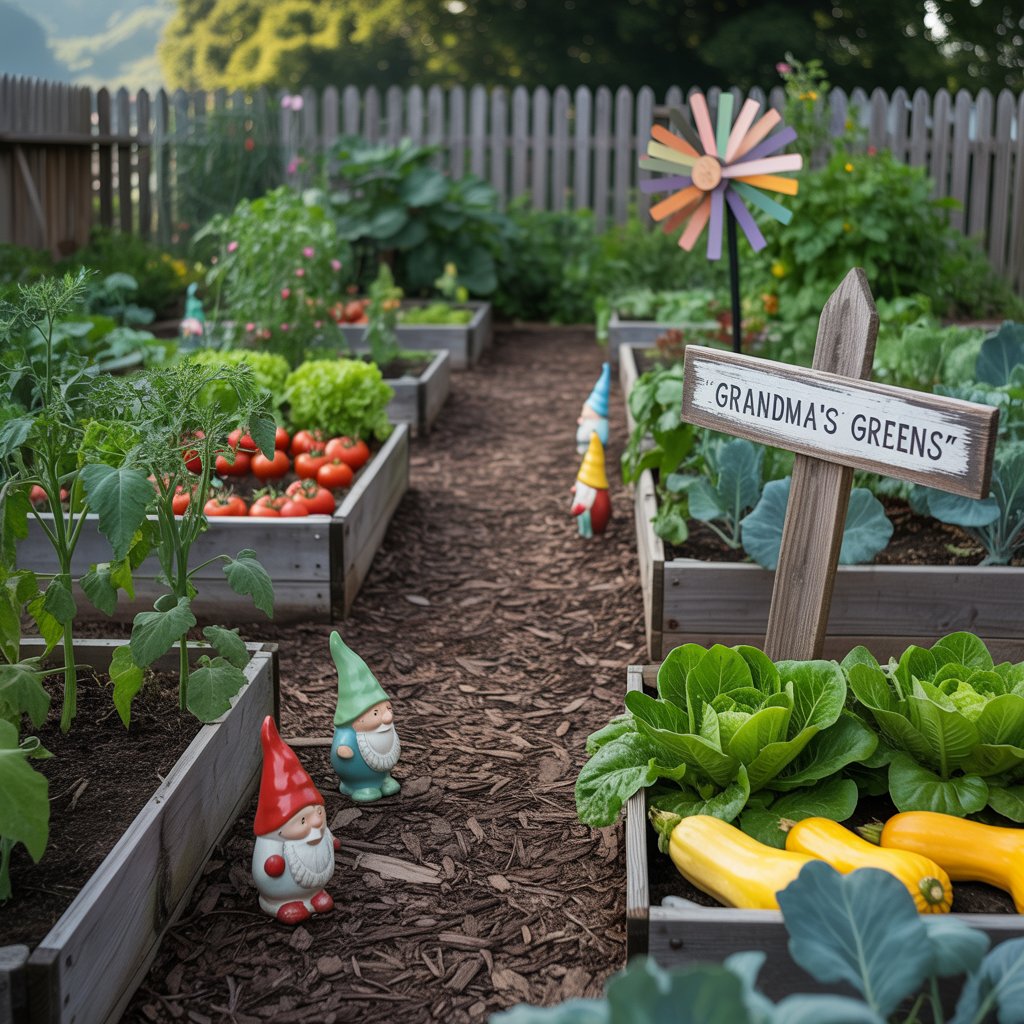
Mulch paths are practical and surprisingly charming. Lay bark mulch or wood chips between raised beds or through herb gardens.
Over time, the mulch will break down and enrich the soil. Add stepping stones if you want more structure. To make it magical, tuck small garden gnomes, wind spinners, or signs among your veggies. It turns a working garden into a whimsical space filled with life.
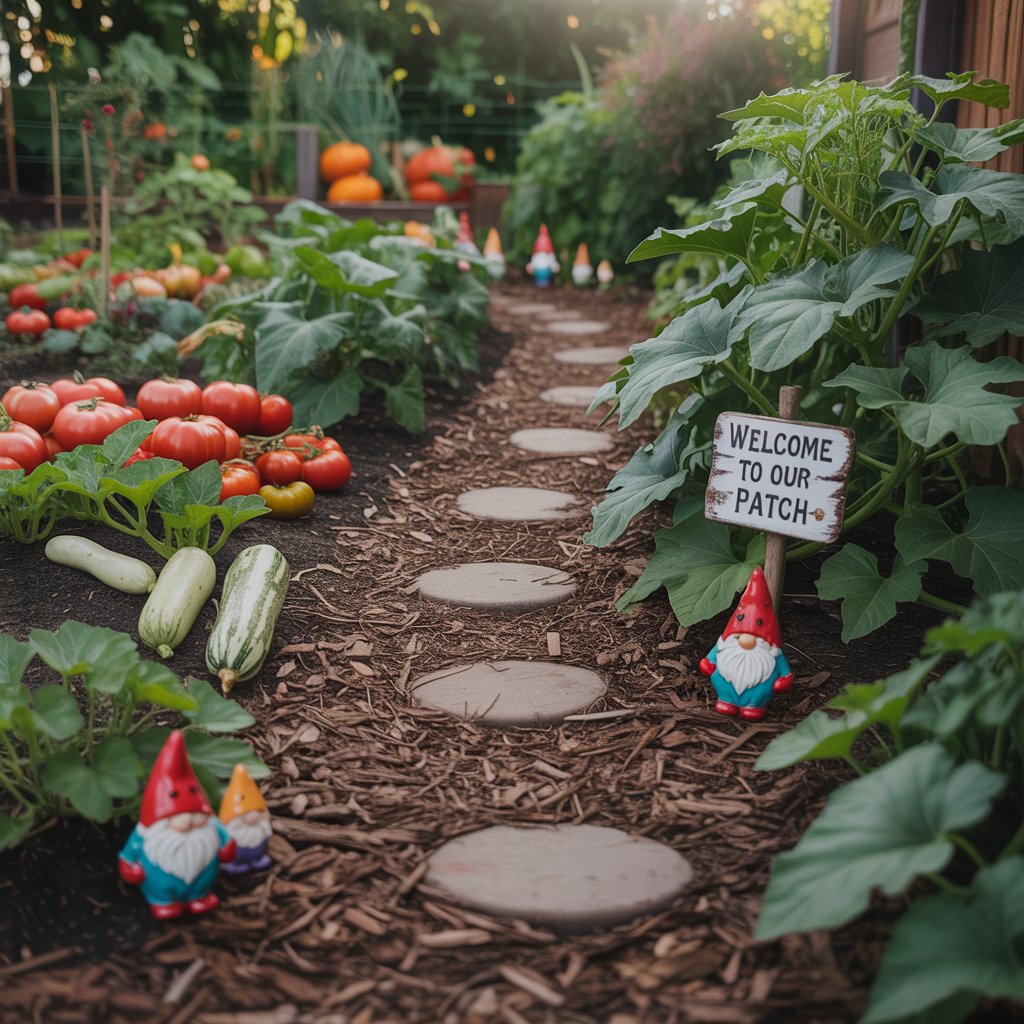
21. Spiral Labyrinth Path with Grass and Stone

Design a spiral labyrinth with stone edges and grassy walkways. It encourages slow, mindful walking and feels meditative.
The spiral form adds an element of mystery and curiosity. You don’t need a huge yard just a small circle can work. Place it in a quiet area with shade trees or wind chimes nearby. This type of path becomes a peaceful retreat within your garden.
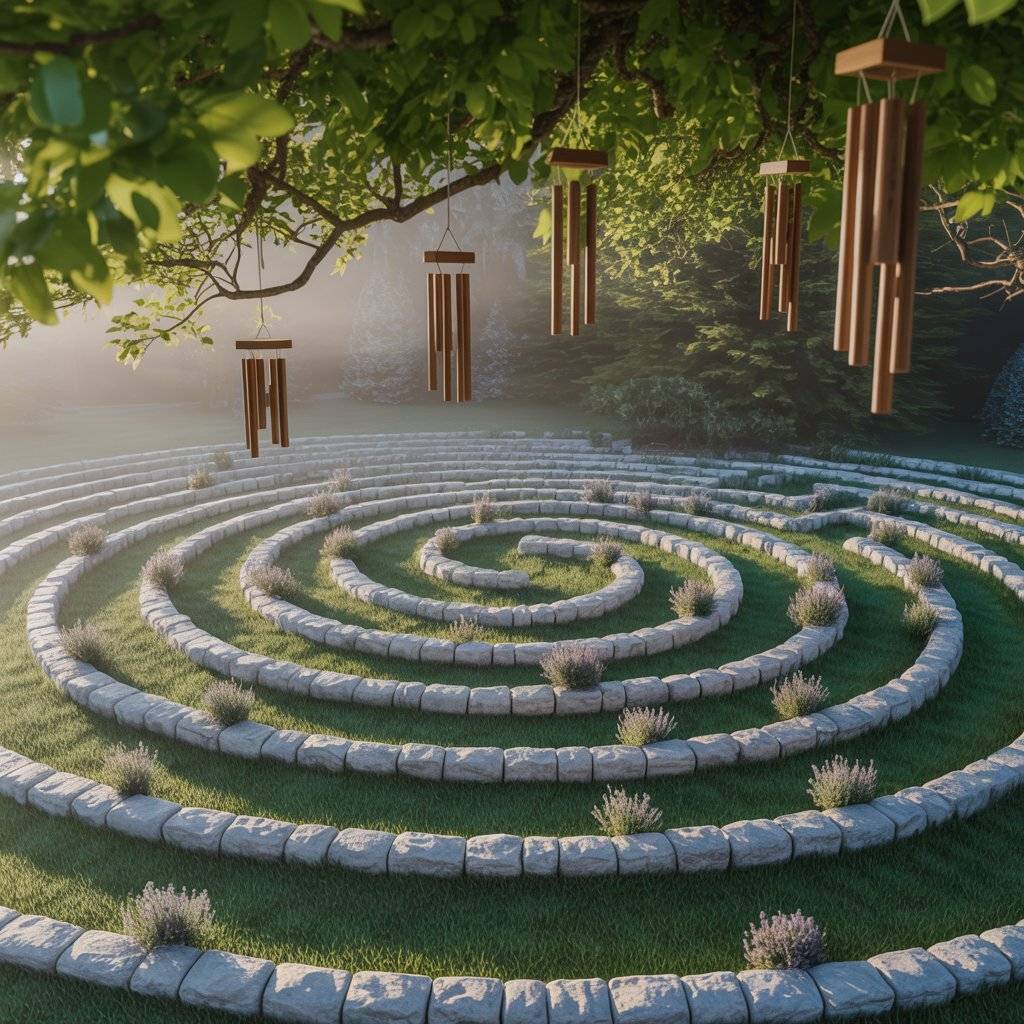
22. Fairy Garden Path with Miniature Features
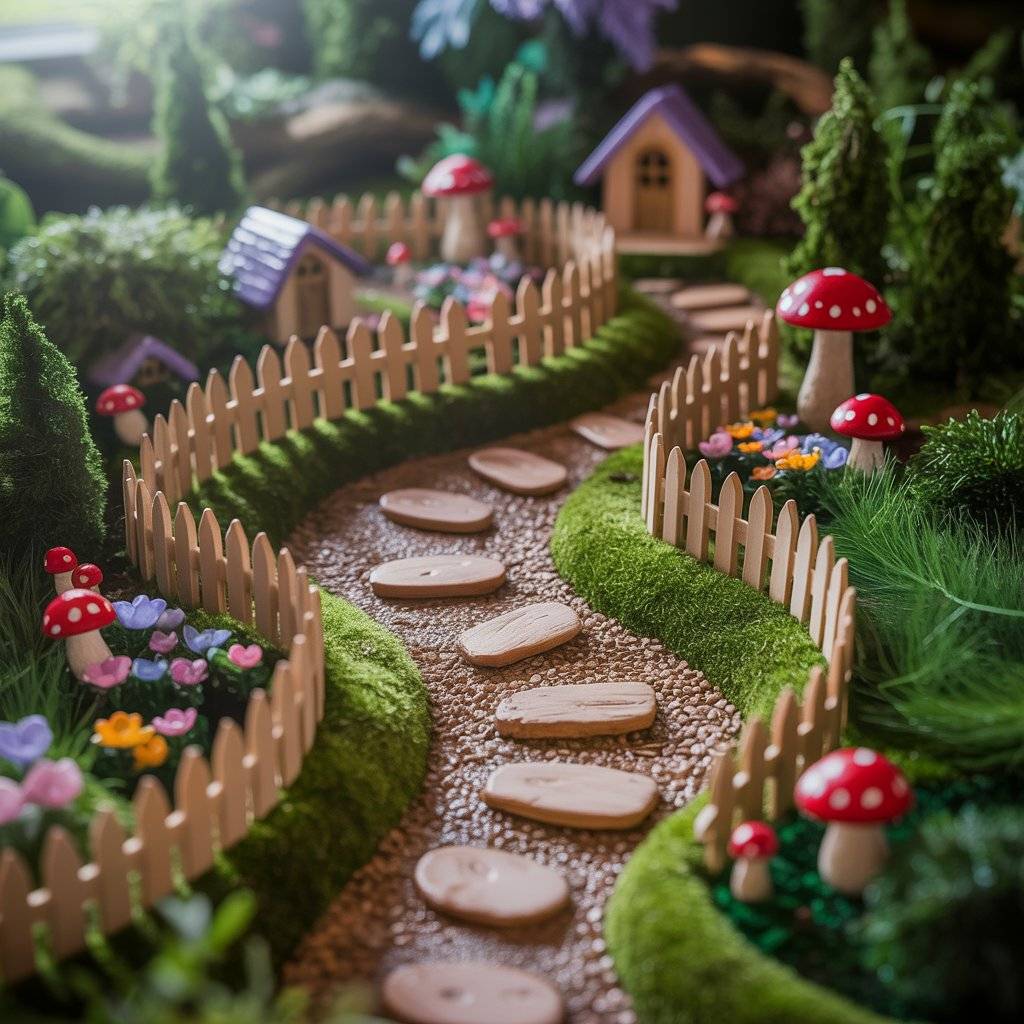
Build a tiny trail within a fairy garden using mini stepping stones, twigs, and pebble dust. Surround it with small fairy houses, mushrooms, and mini fences.
It’s a great project for families or anyone who loves detail. Place this miniature scene along the edge of a larger path or under a tree. It adds a layer of discovery and wonder to your garden journey.
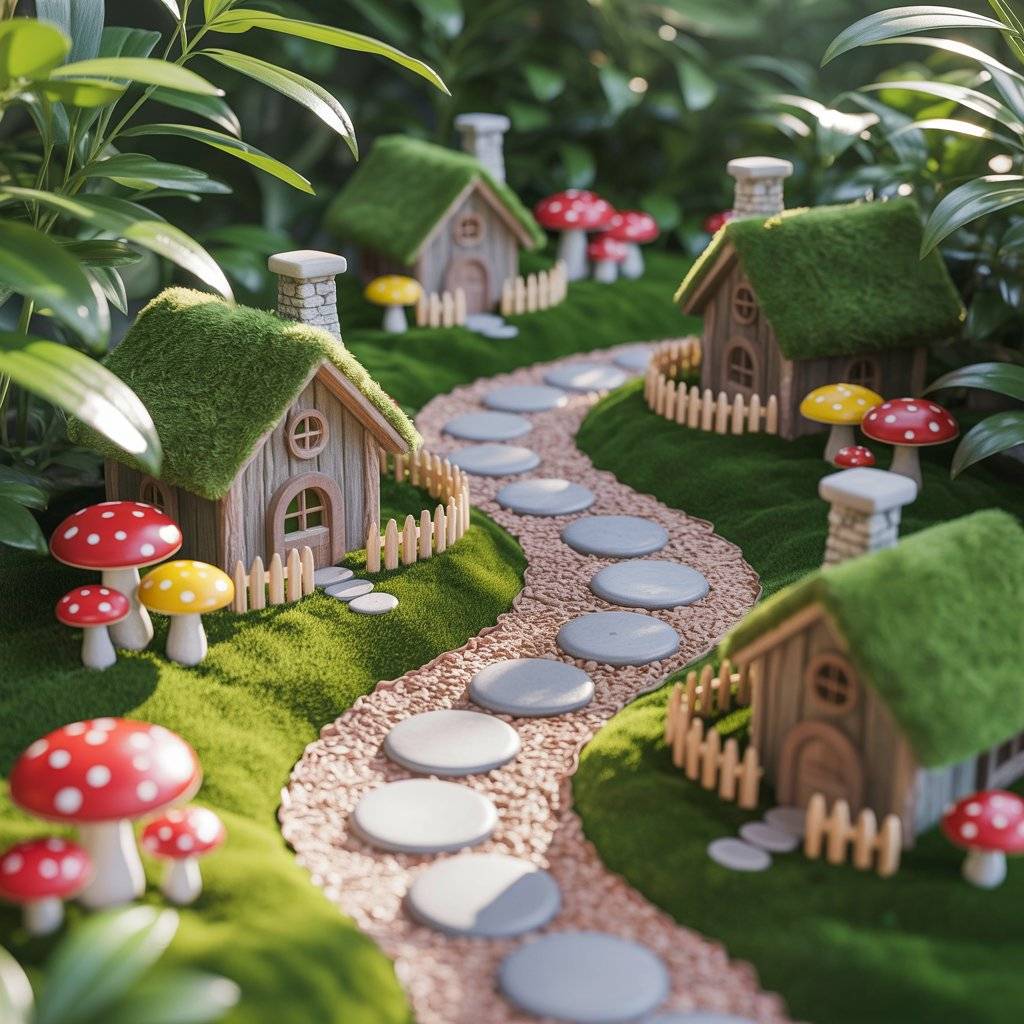
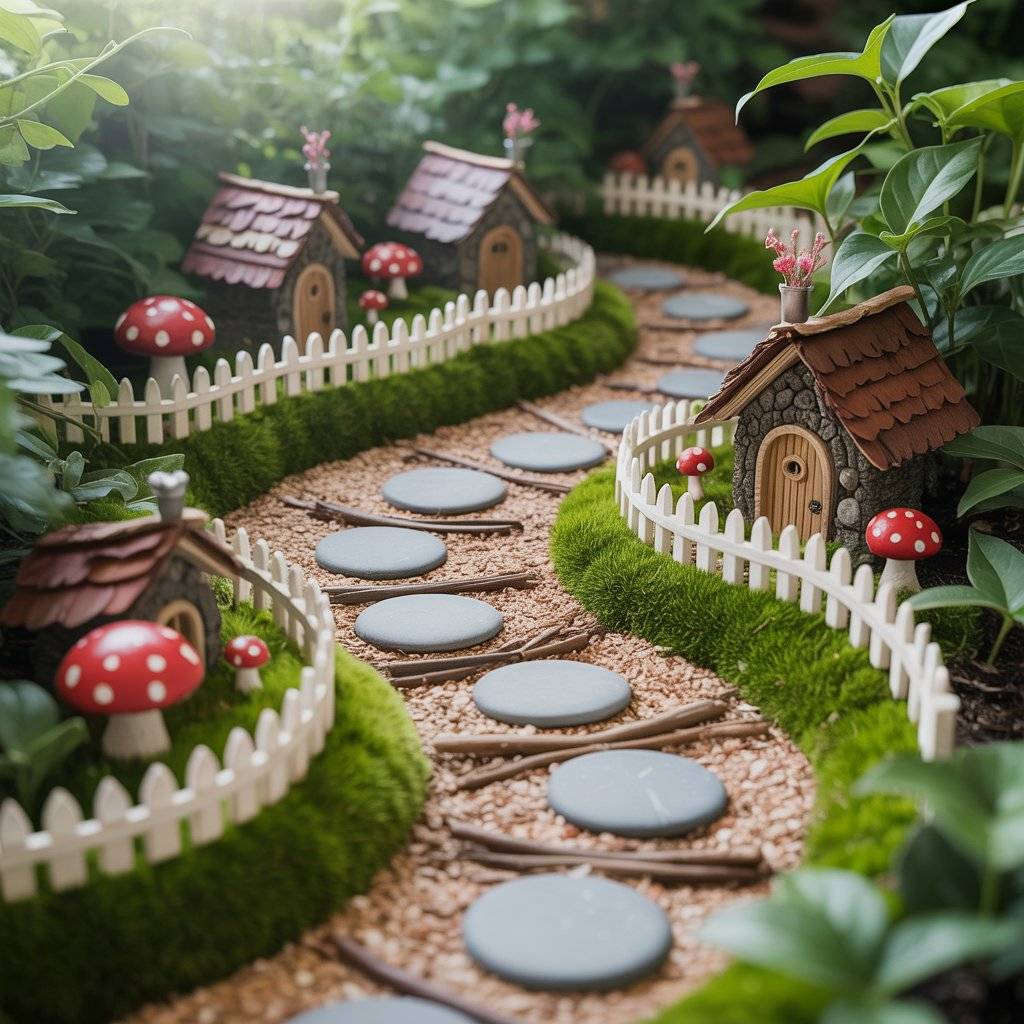
23. Rustic Log Edged Gravel Path
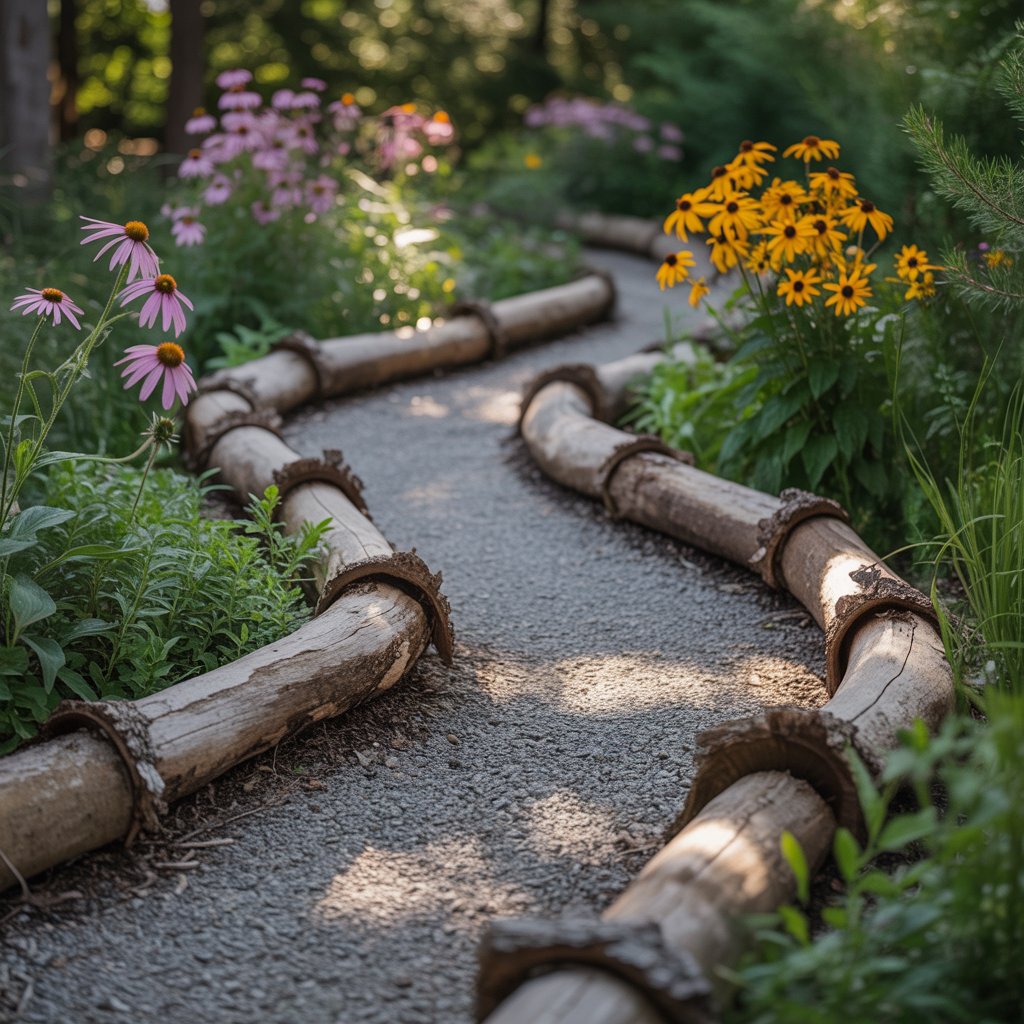
Outline your gravel path with small logs or branches for a rustic, handmade look. This edging helps keep gravel in place and adds to the woodland feel.
Use aged or mossy logs for extra charm. It works especially well in shaded or forest gardens. Plant native wildflowers nearby and let the edges stay a bit wild for that natural magic.
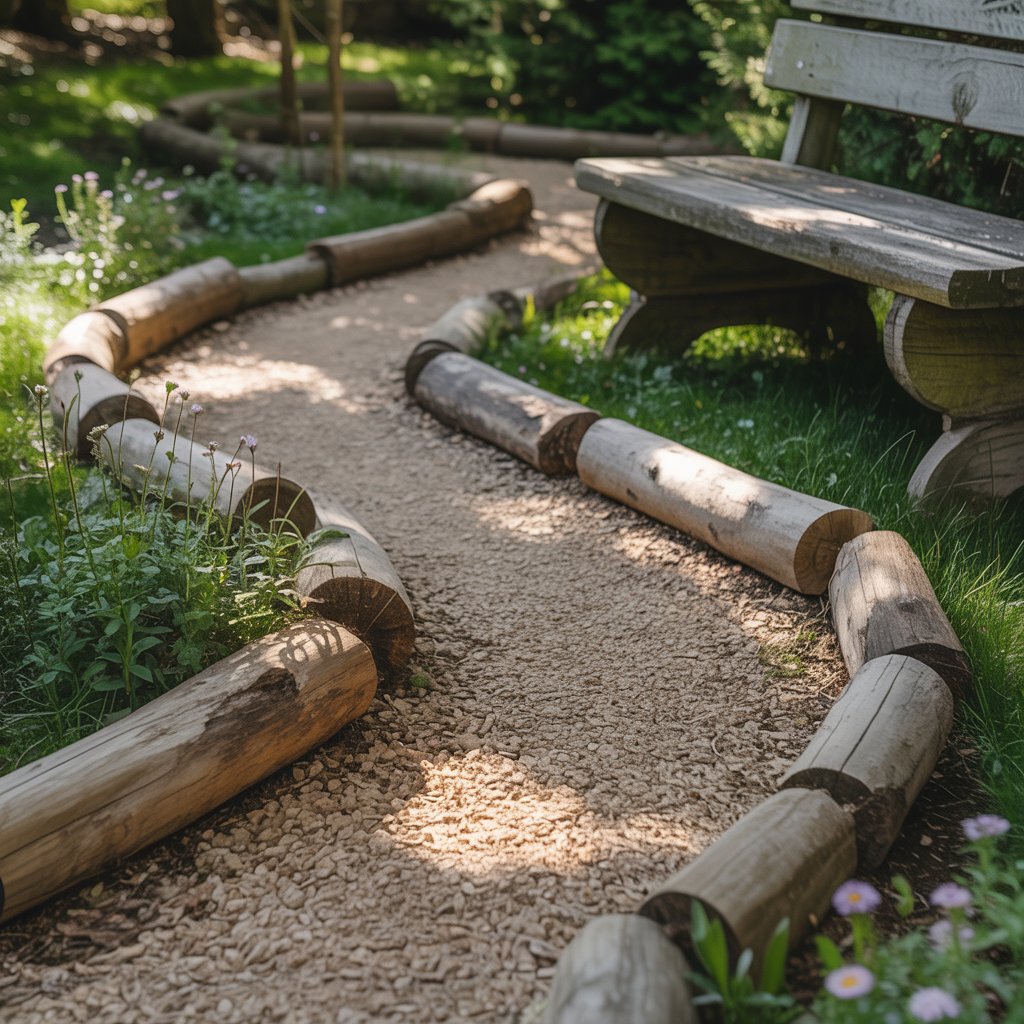
24. Secret Path to a Hidden Pergola

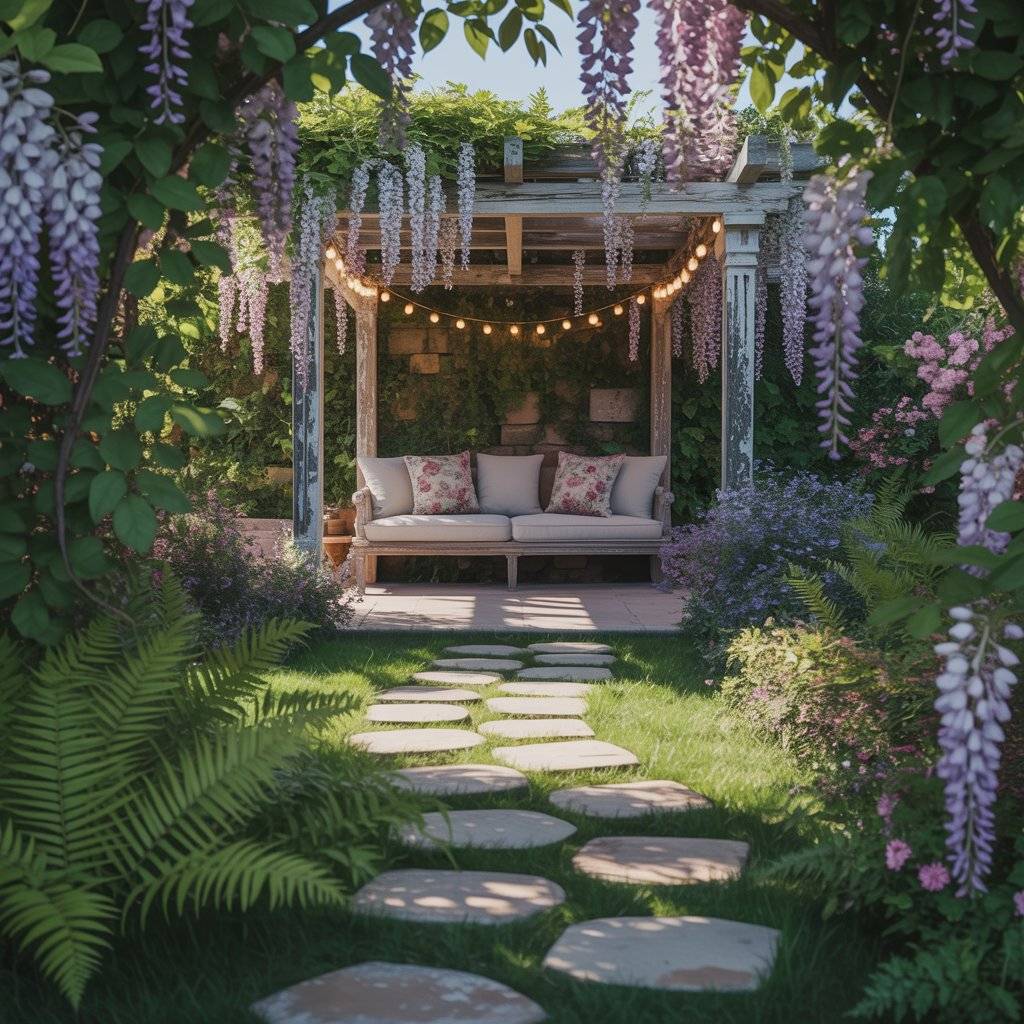
Finish your magical journey with a path that leads to a secluded pergola. Use winding stone or mulch trails that gradually disappear into taller plants or flowering vines.
The pergola can be simple wood or wrought iron, draped in curtains or climbing roses. Inside, add a bench, hanging lights, or cushions. This becomes your private retreat the final stop on your fairytale path.

AFQs
1. What is the easiest type of magical garden path to install for beginners?
A stepping stone path across a lawn or a bark mulch trail are among the easiest to install. They require minimal tools, materials, and skill, yet still create a charming, whimsical feel.
2. How do I make sure my garden path looks magical at night?
Use solar-powered lanterns, glow-in-the-dark pebbles, or twinkle lights woven into archways and plants. These lighting elements create a soft glow and dreamy ambiance after sunset.
3. What plants work best alongside a fairytale-style garden path?
Lavender, creeping thyme, moss, ferns, and flowering groundcovers like alyssum or violas work beautifully. They soften the edges and add fragrance, color, and charm.
4. Are these garden path ideas expensive to implement?
Not necessarily. Many options like wood slices, bark mulch, or crushed granite are budget-friendly. Repurposing materials or using native plants can also keep costs low.
5. Can I combine more than one path idea in my garden?
Absolutely. Mixing styles like a flagstone path that ends in a wood slice seating area or a lavender-lined gravel trail with mirror accents can make your space feel more magical and personalized.
6. Do these paths require a lot of maintenance?
Maintenance depends on the material. Gravel and bark mulch may need occasional replenishing, while moss and creeping plants require watering and trimming. However, most of these paths are designed to age gracefully with minimal upkeep.
Why I Wrote This Article
✅ Inspire Backyard Creativity
I wanted to show how everyday outdoor spaces can become dreamlike retreats with the right path design. It’s about unlocking imagination at home.
✅ Make Garden Projects Feel Achievable
All 24 ideas are broken down so that anyone, regardless of budget or skill level, can bring one to life.
✅ Blend Beauty and Practicality
Each path design balances form and function so that the garden isn’t just pretty—it’s walkable, peaceful, and enjoyable.
✅ Share the Joy of Outdoor Living
Garden paths lead to connection—whether it’s with nature, loved ones, or your own thoughts. I wanted to celebrate that.
✅ Provide Clear, Real-World Guidance
This article is packed with helpful tips, not fluff—so readers walk away feeling prepared, not overwhelmed.
✅ Encourage Personal Expression
Your path should reflect your story. I wrote this to help readers design something that feels meaningful, not just beautiful.
Final Thought
I hope this guide helps you step into your own magical garden path project with confidence. Every twist, turn, and detail you add brings more life and charm to your space. Keep reading, be inspired, and enjoy every step of the journey to your fairytale retreat. 🌿
- Niacinamide Whitening Toothpaste: A Natural Solution for Stubborn Stains - November 14, 2025
- Sustainable Christmas Decor Brands Eco Friendly Products to Your Home - November 9, 2025
- Finally, a Massage That Feels Like Real Hands: Handiva Review - November 9, 2025

